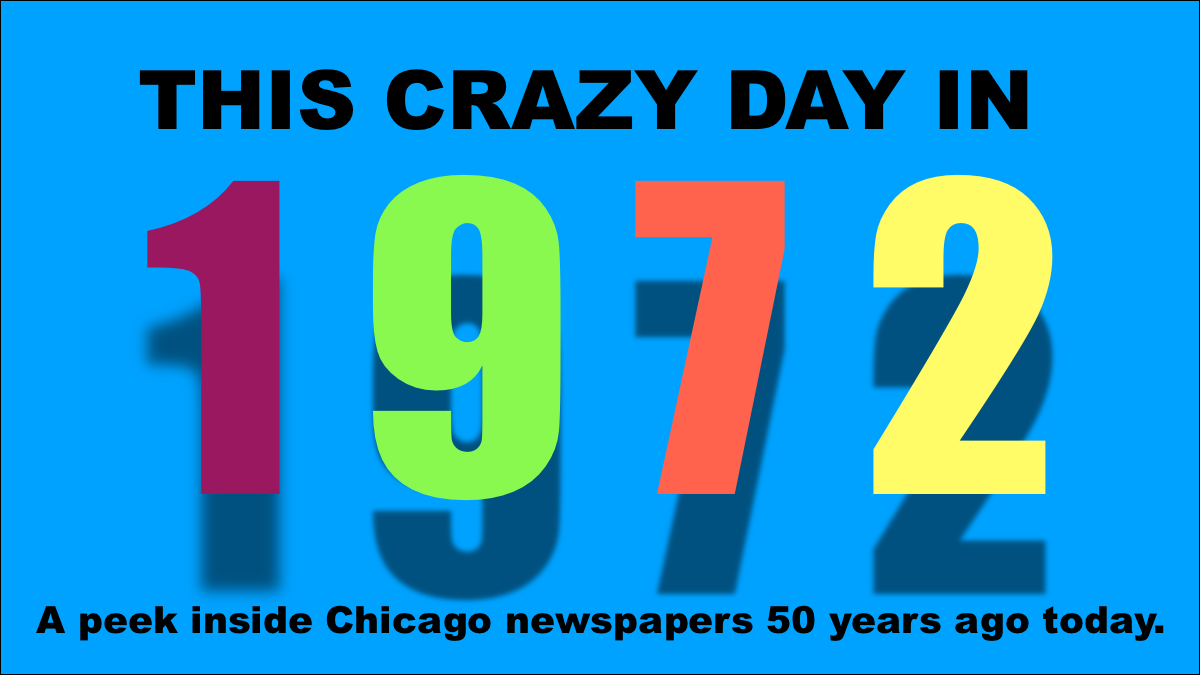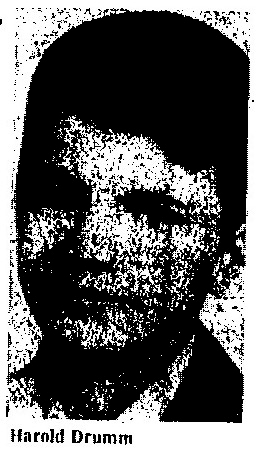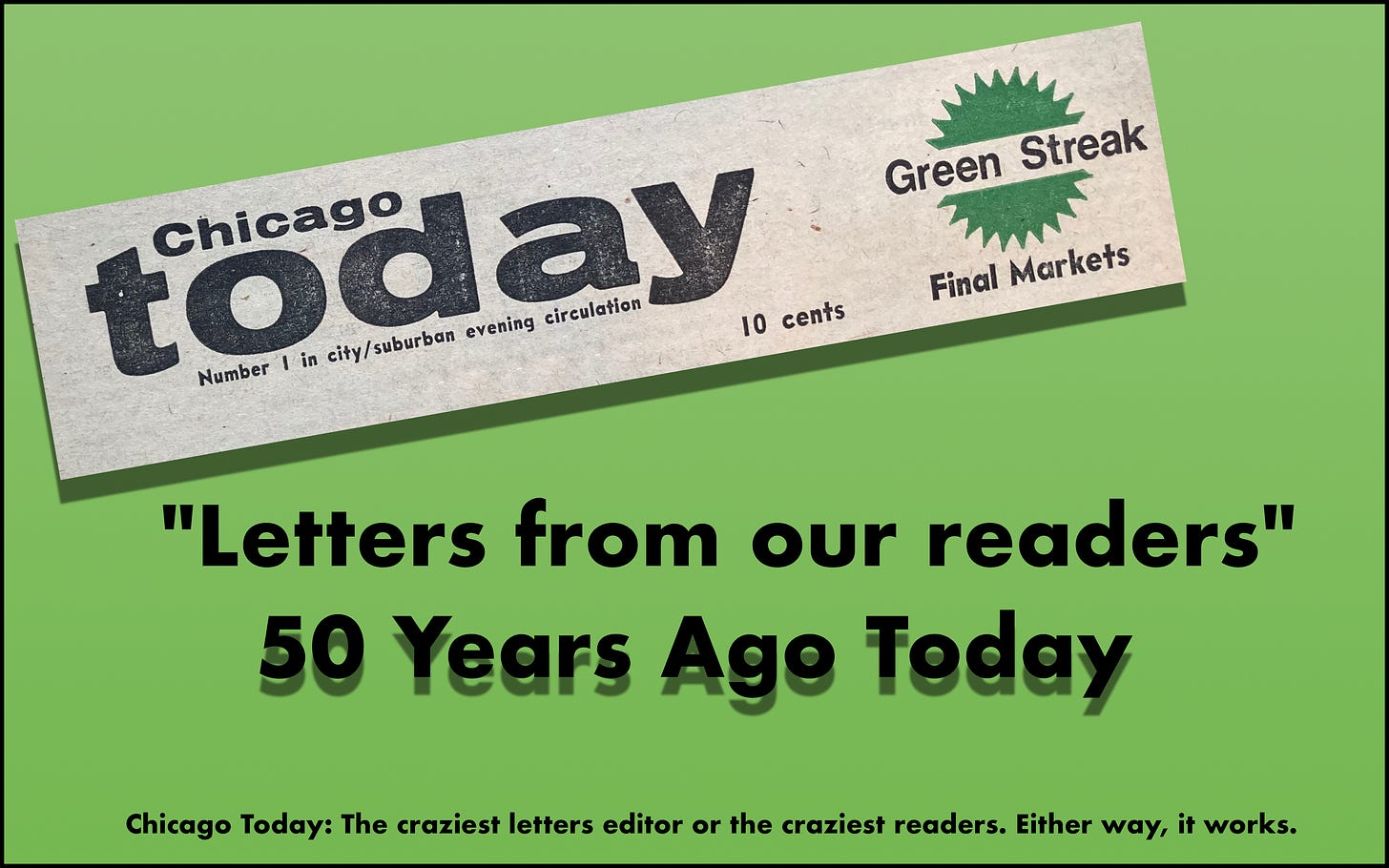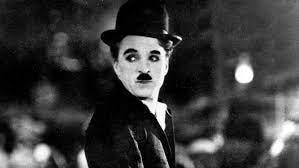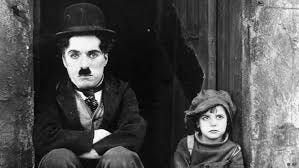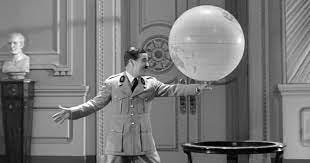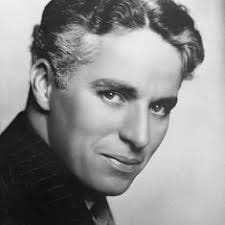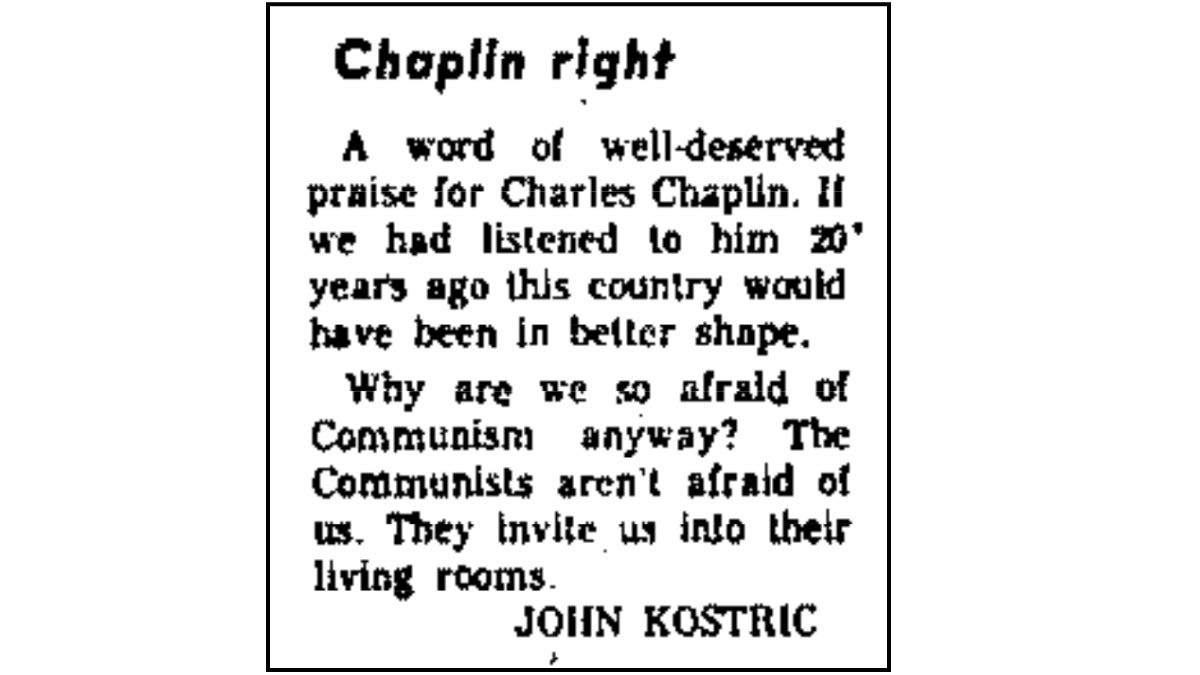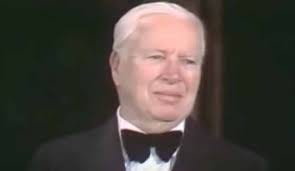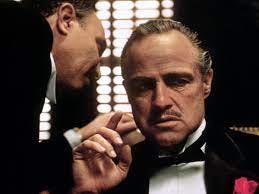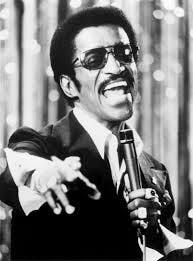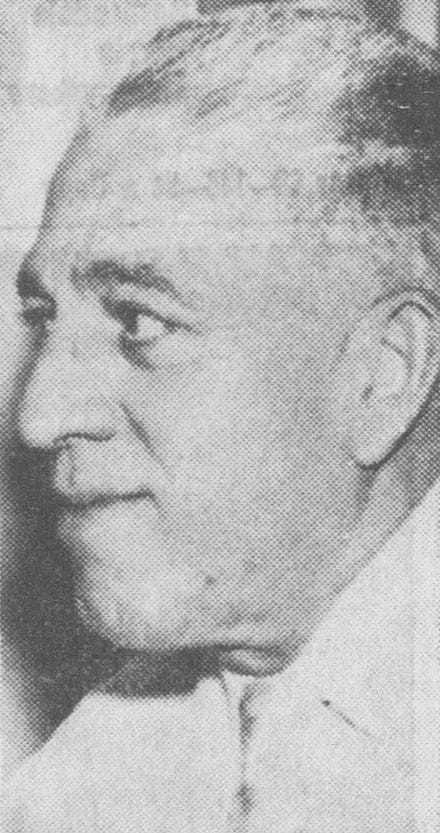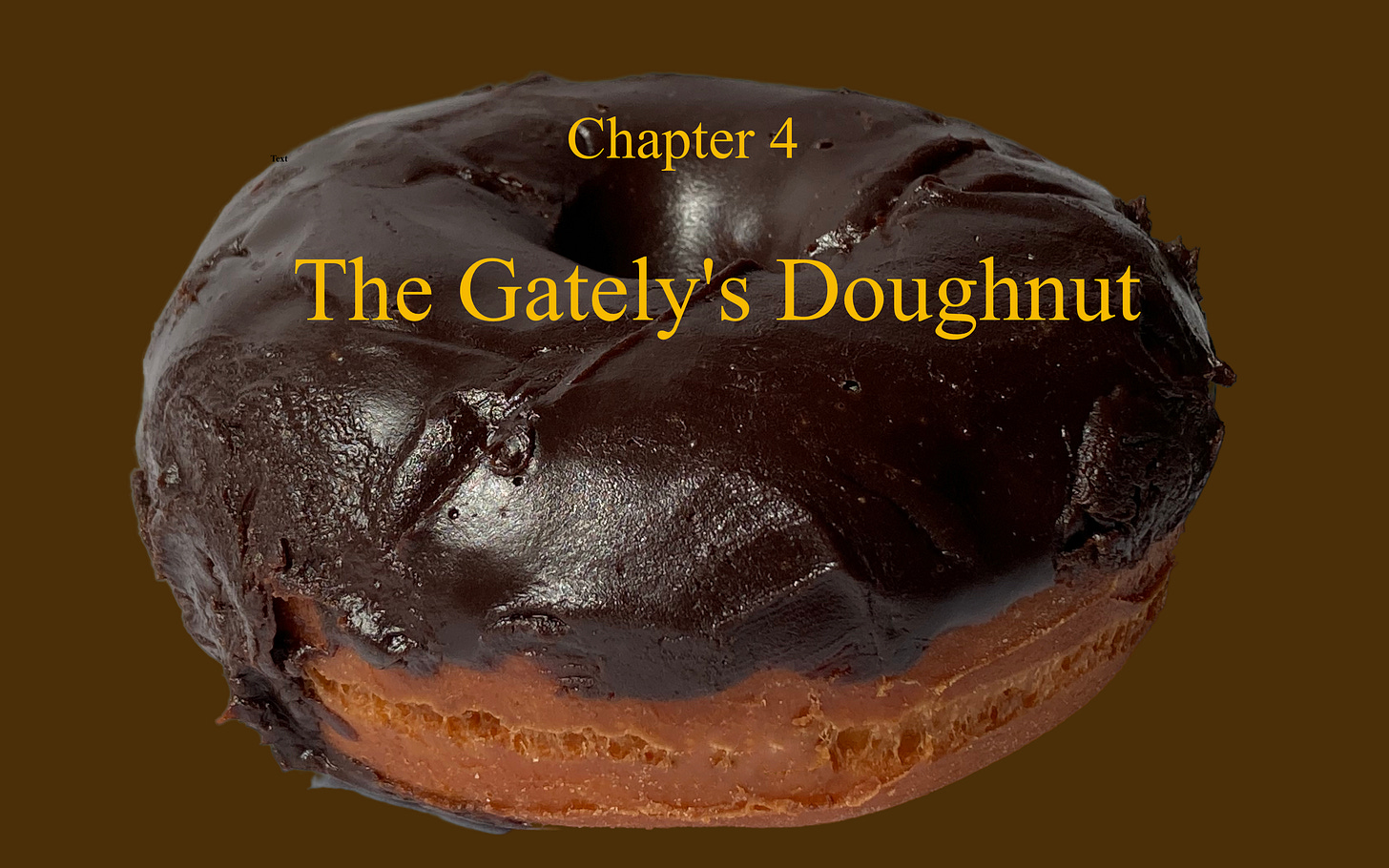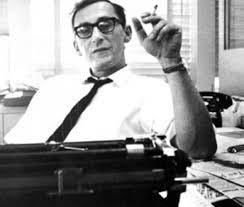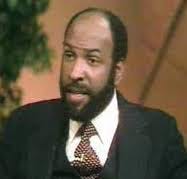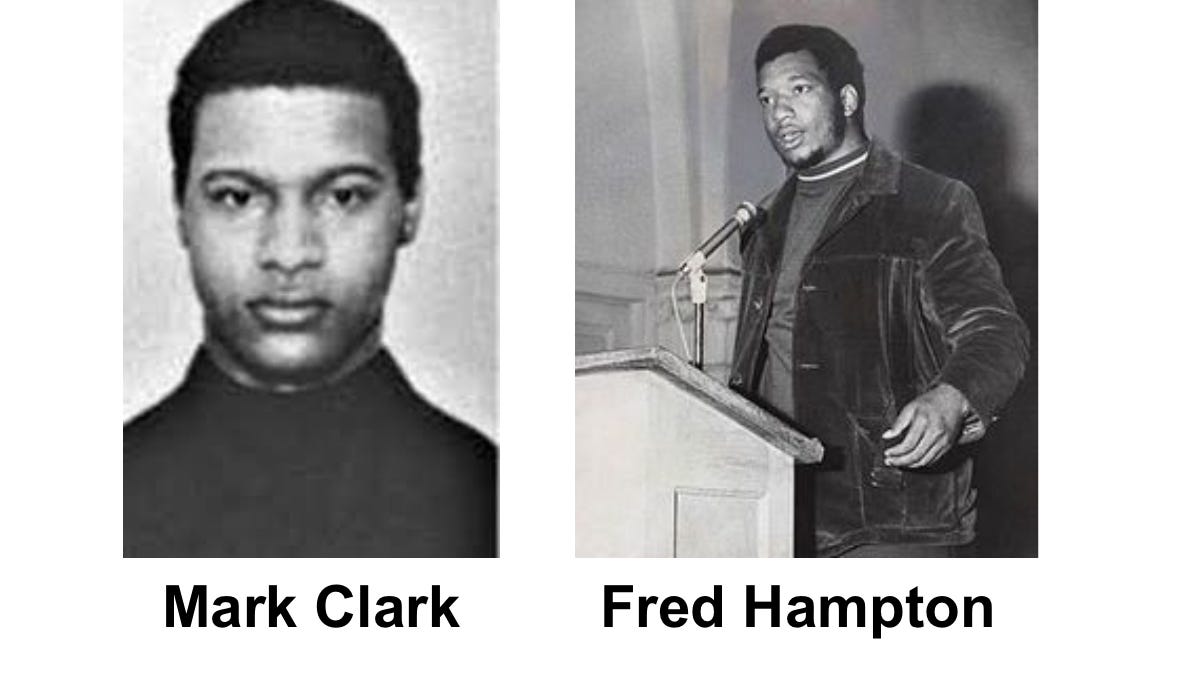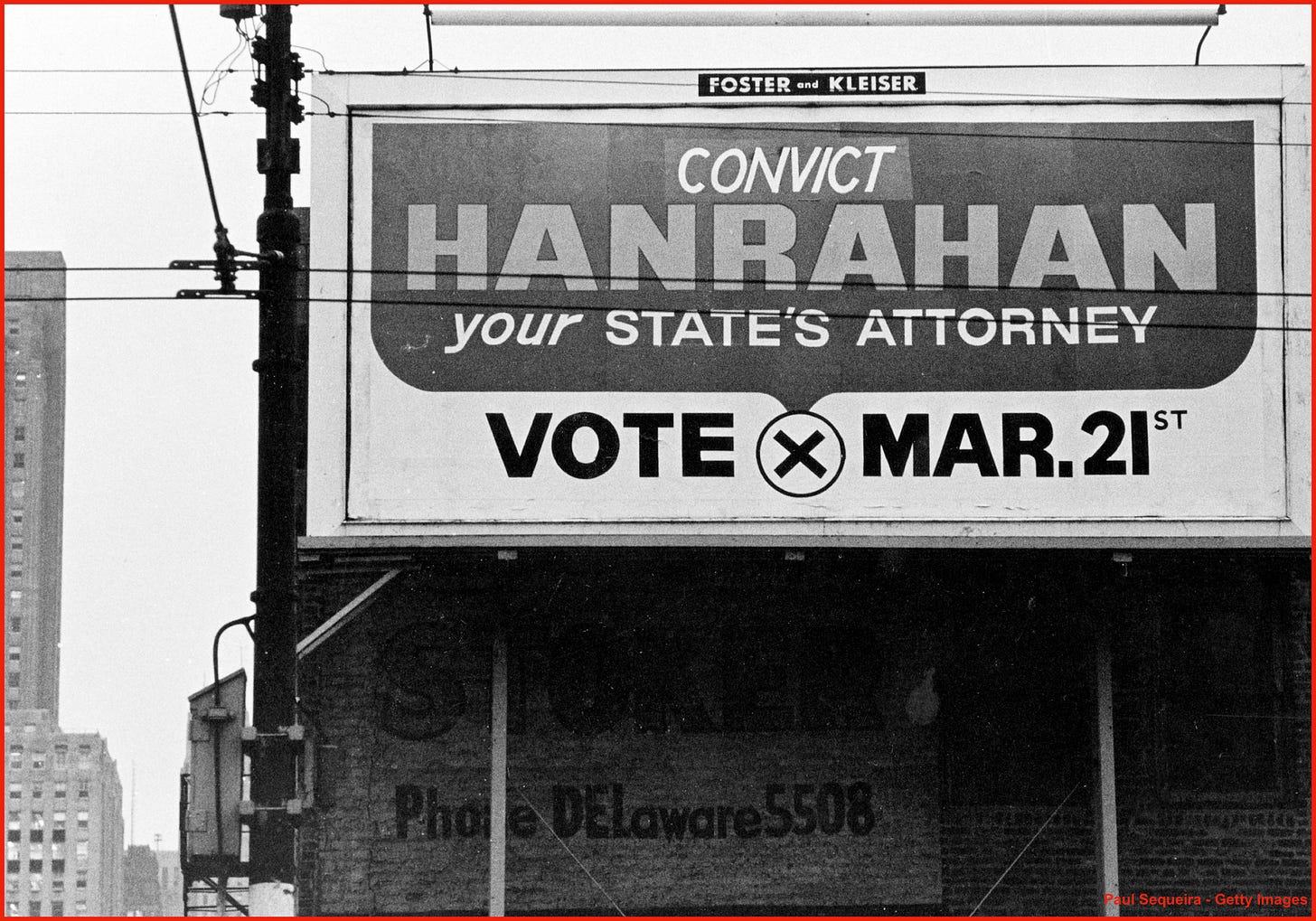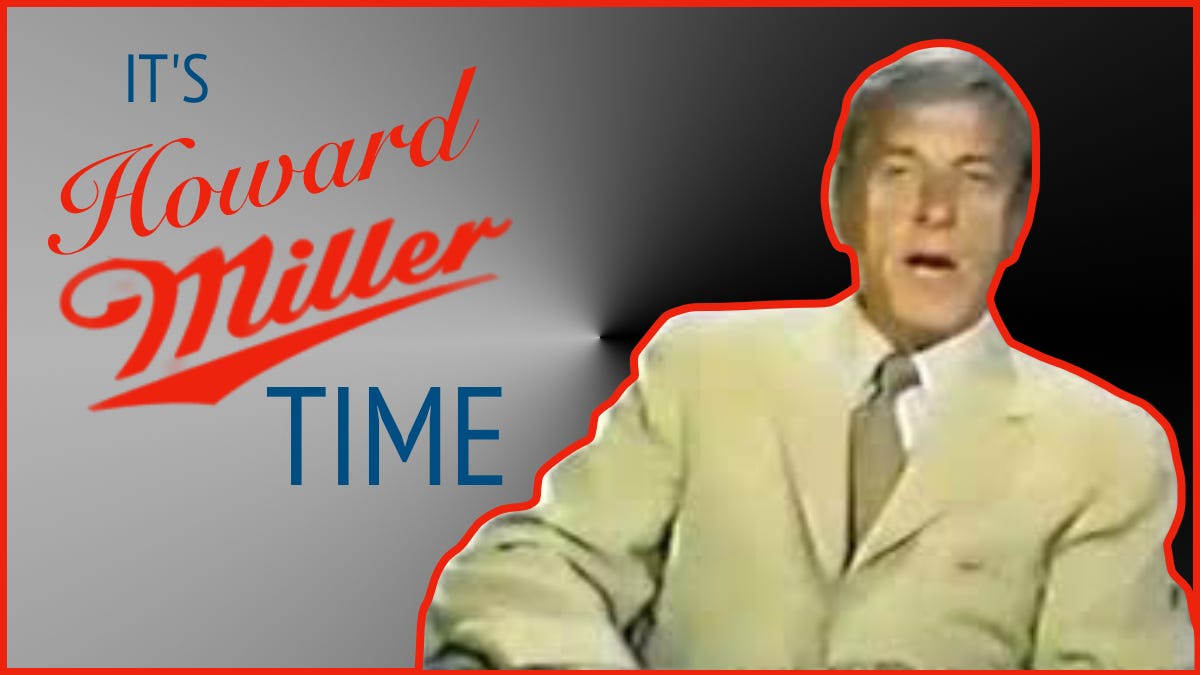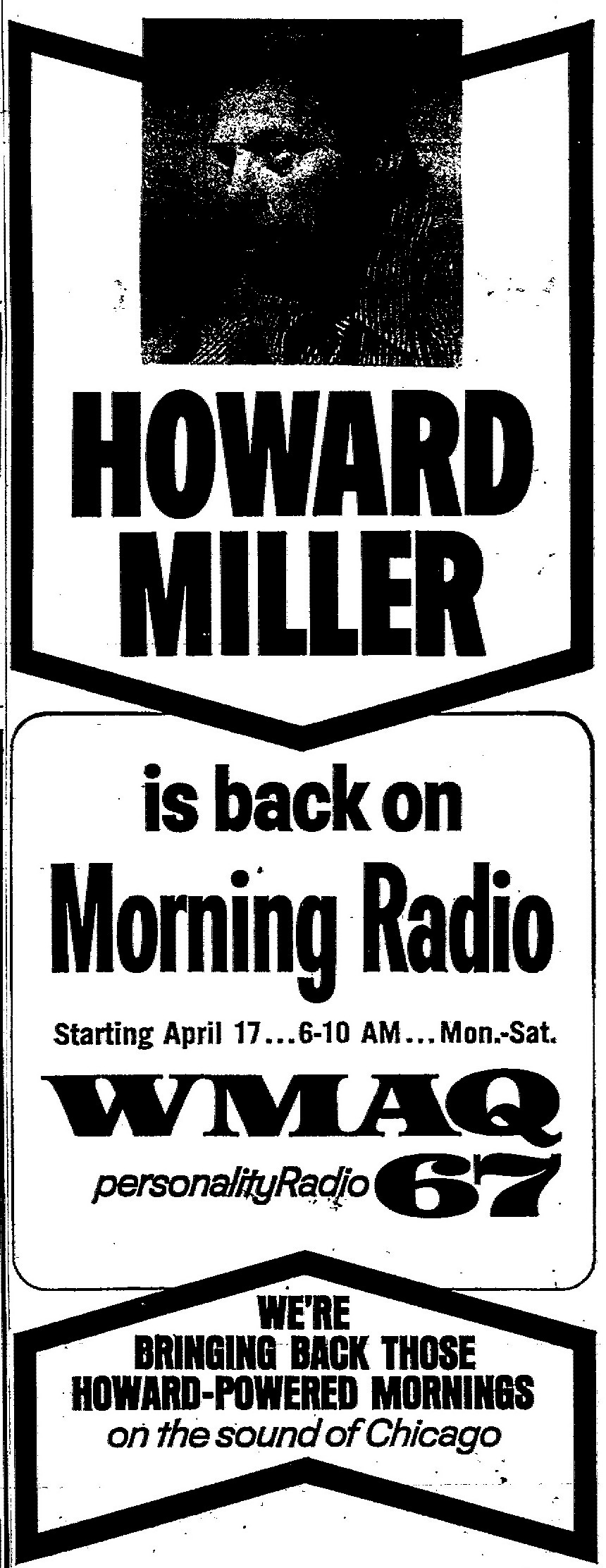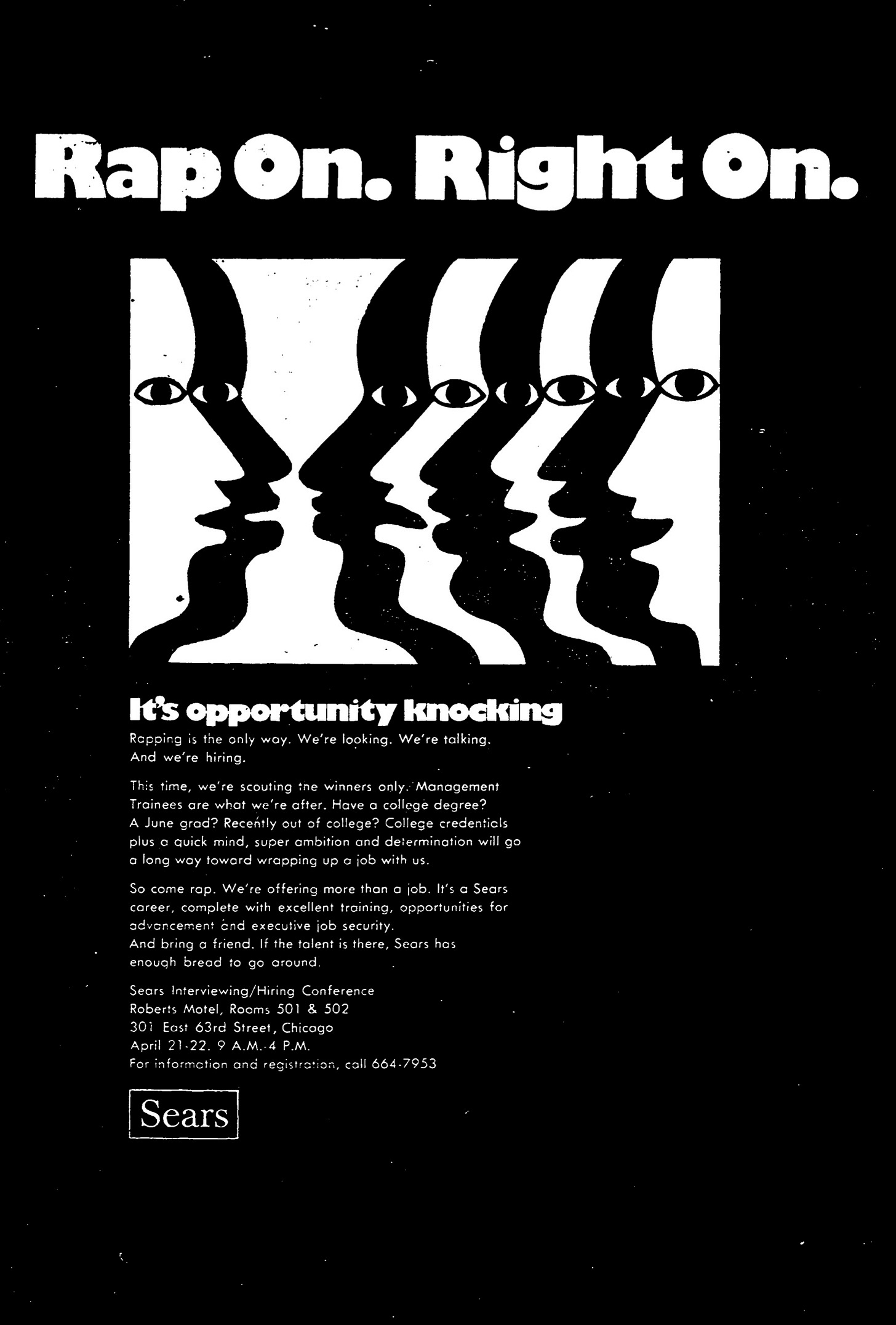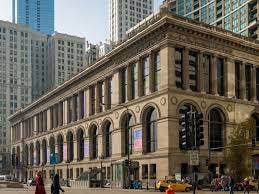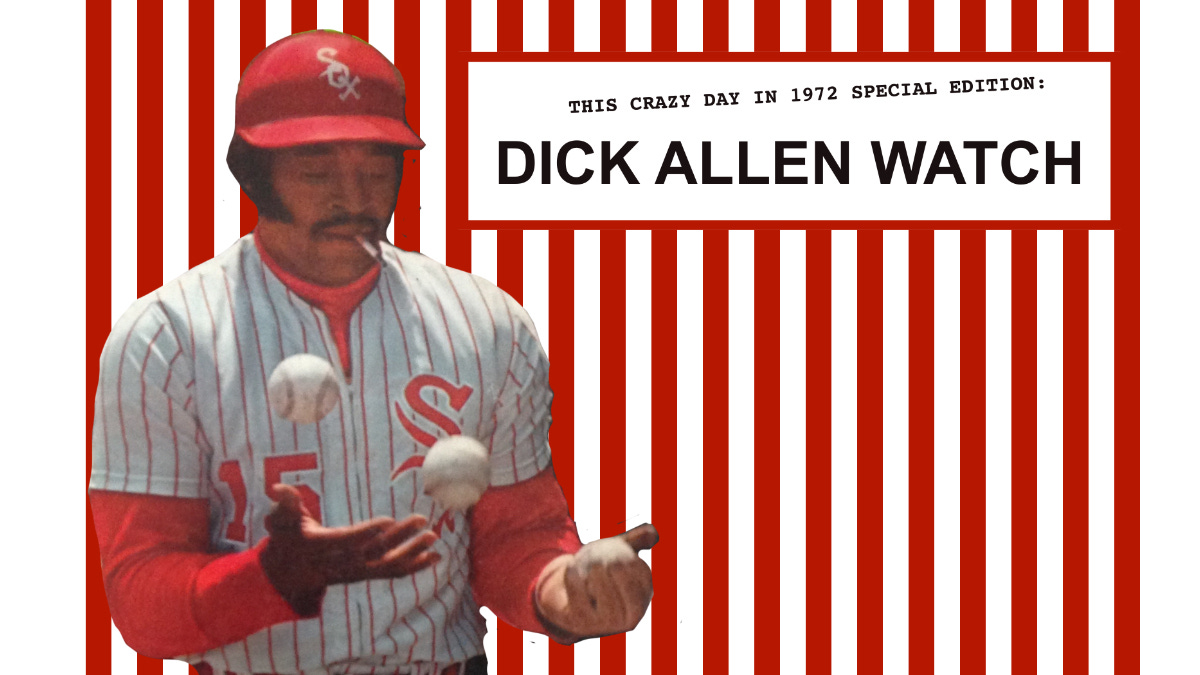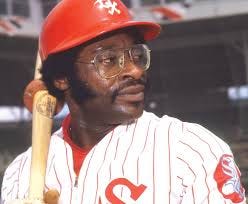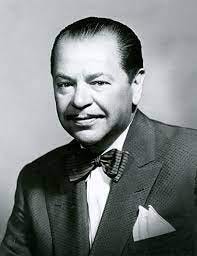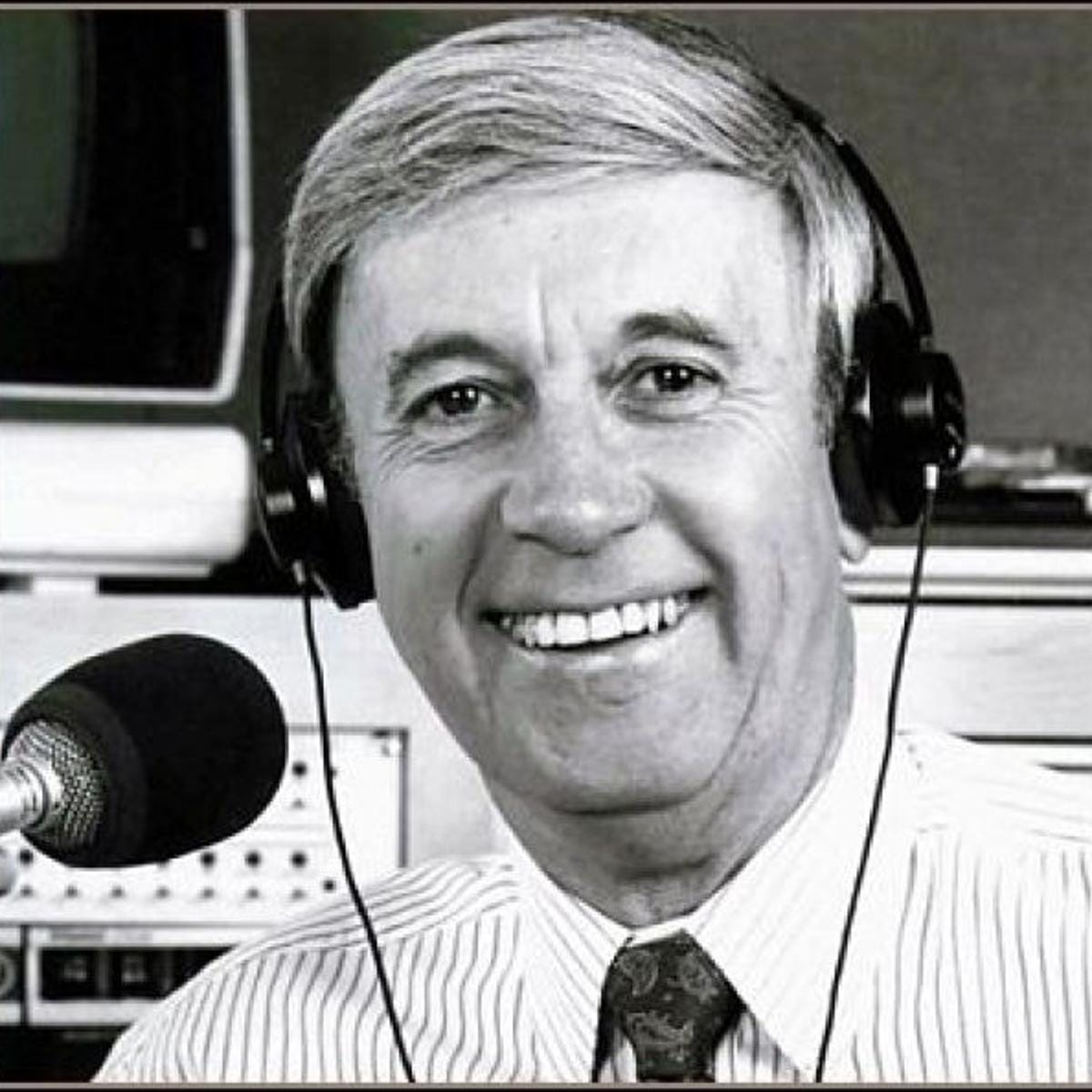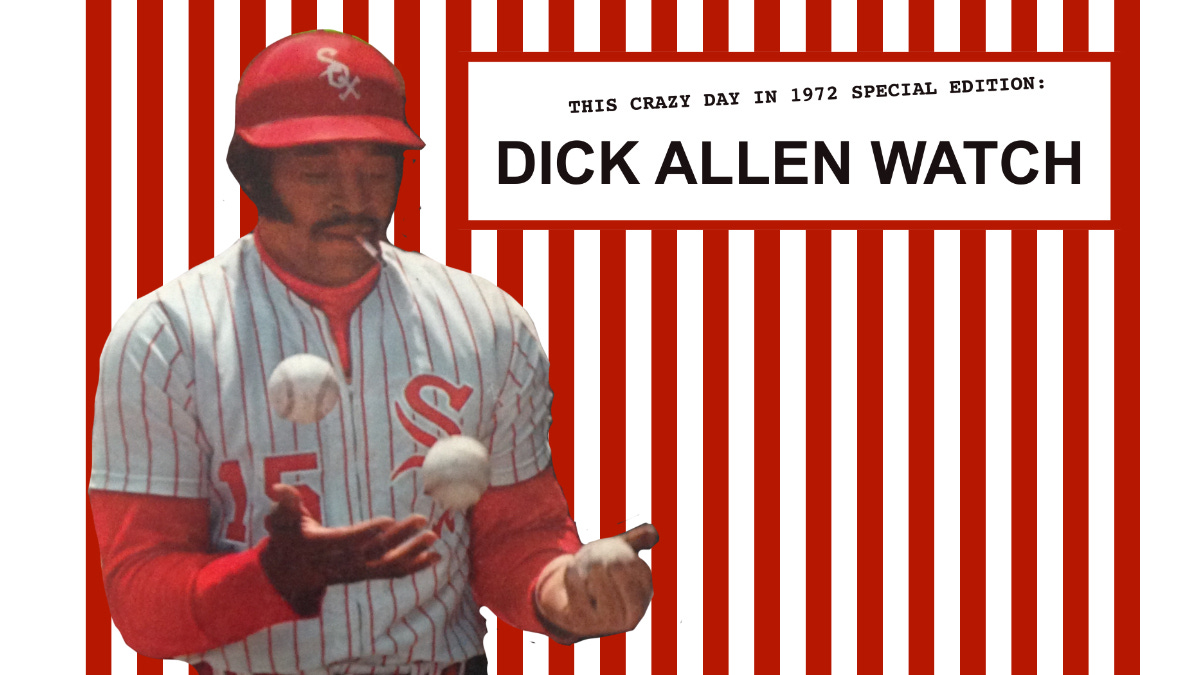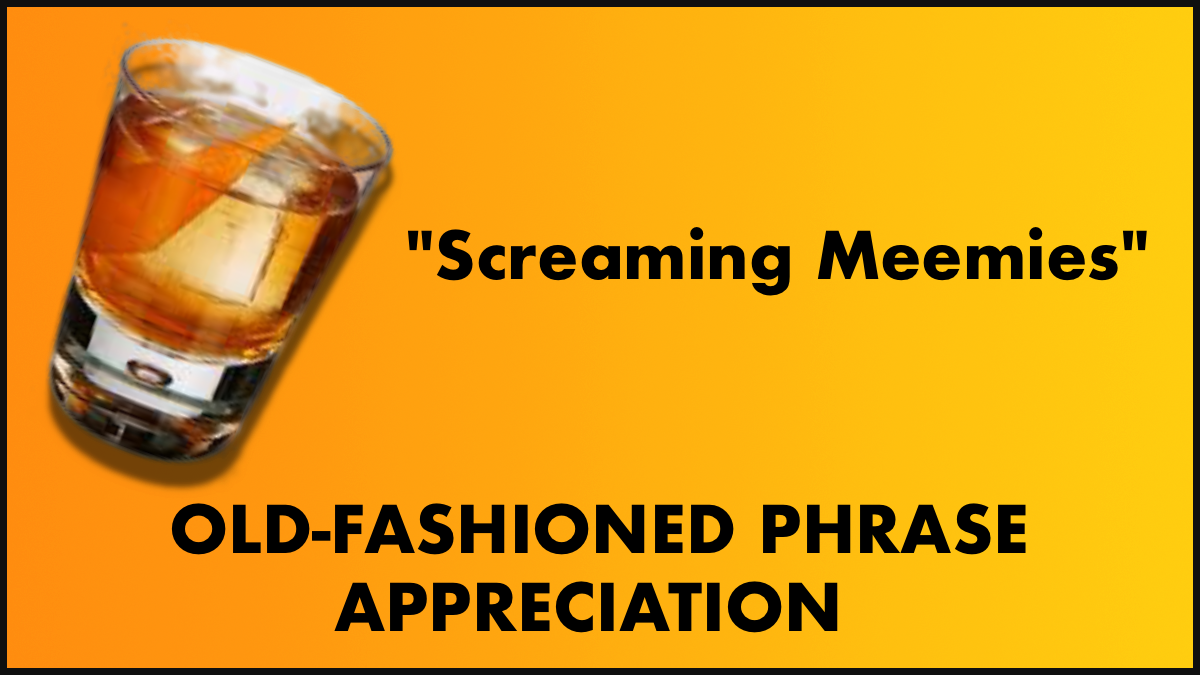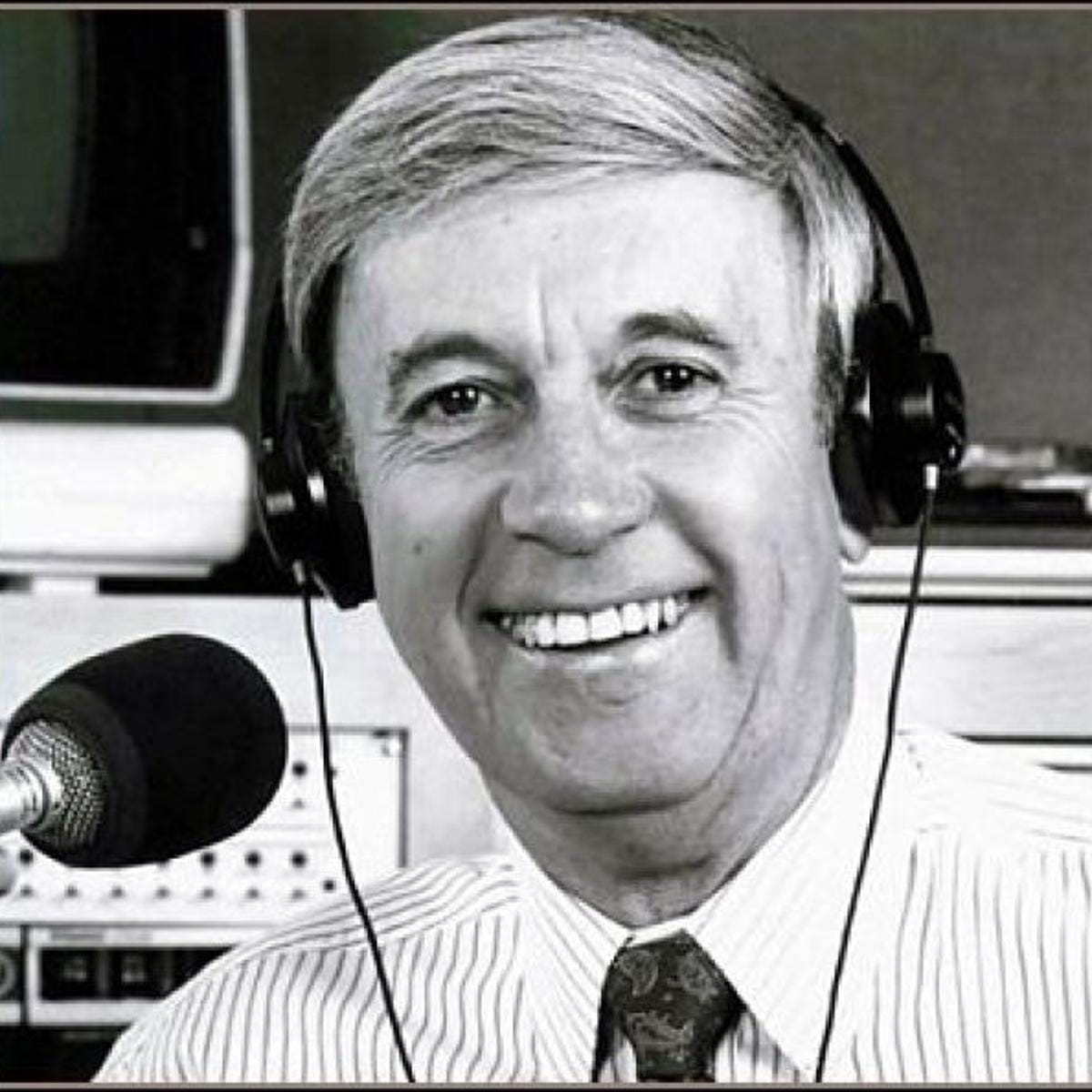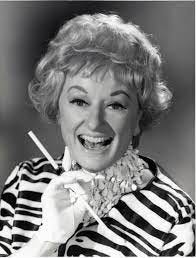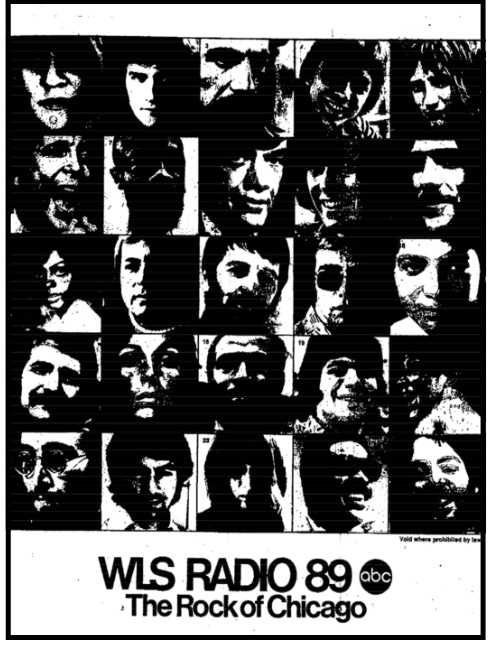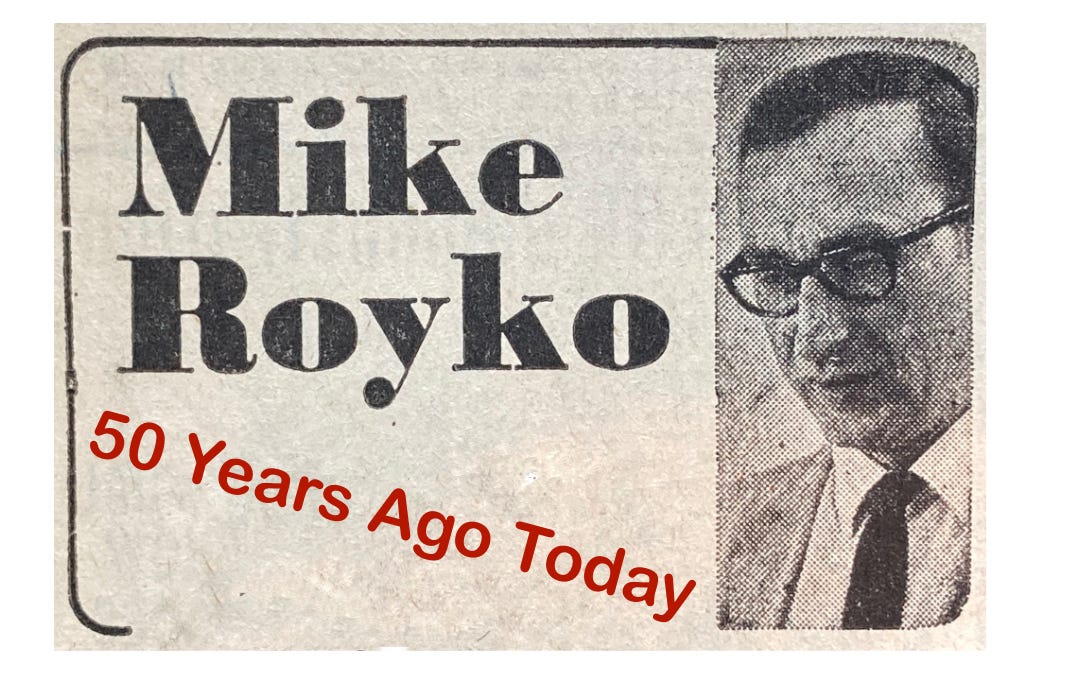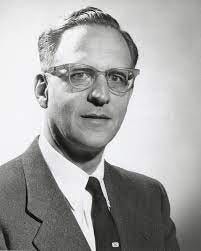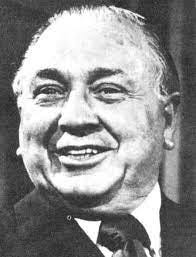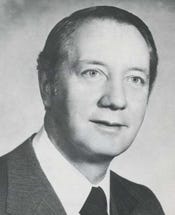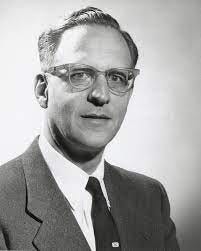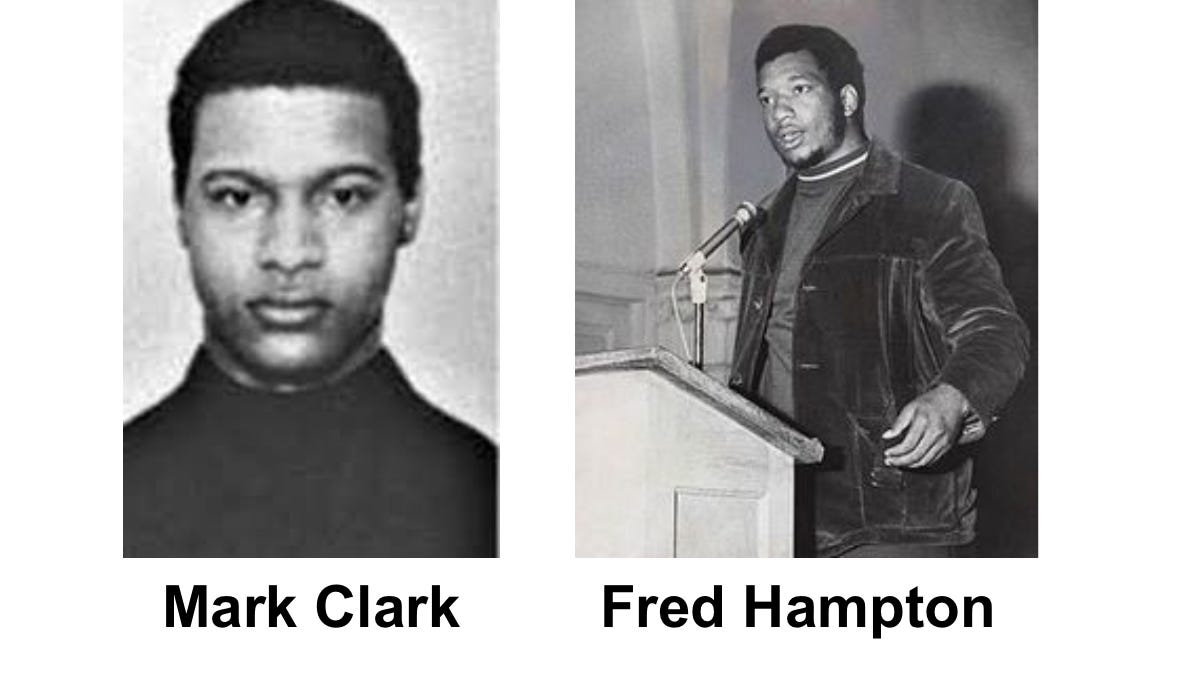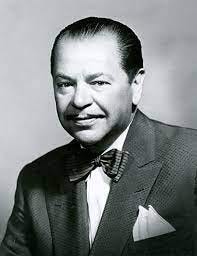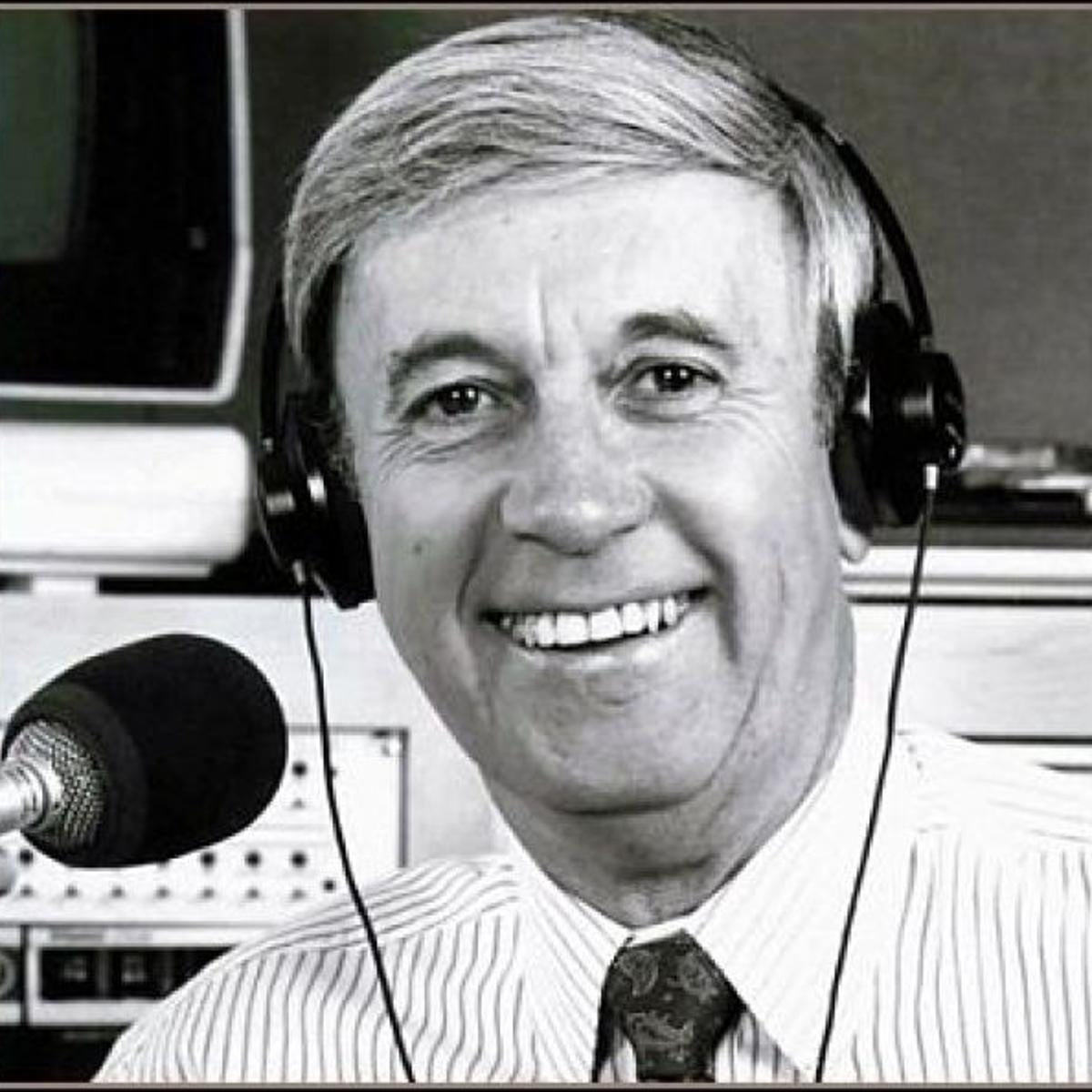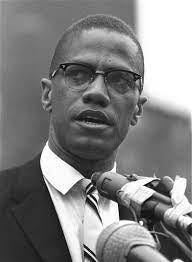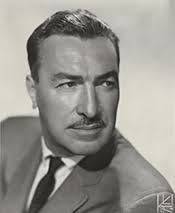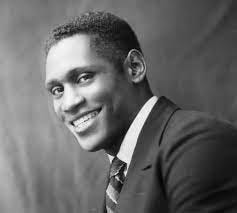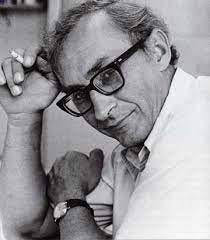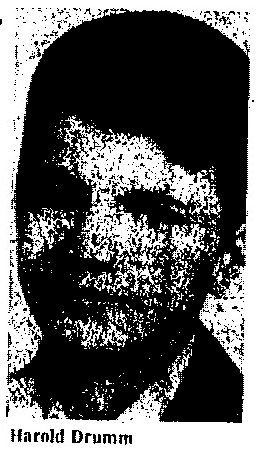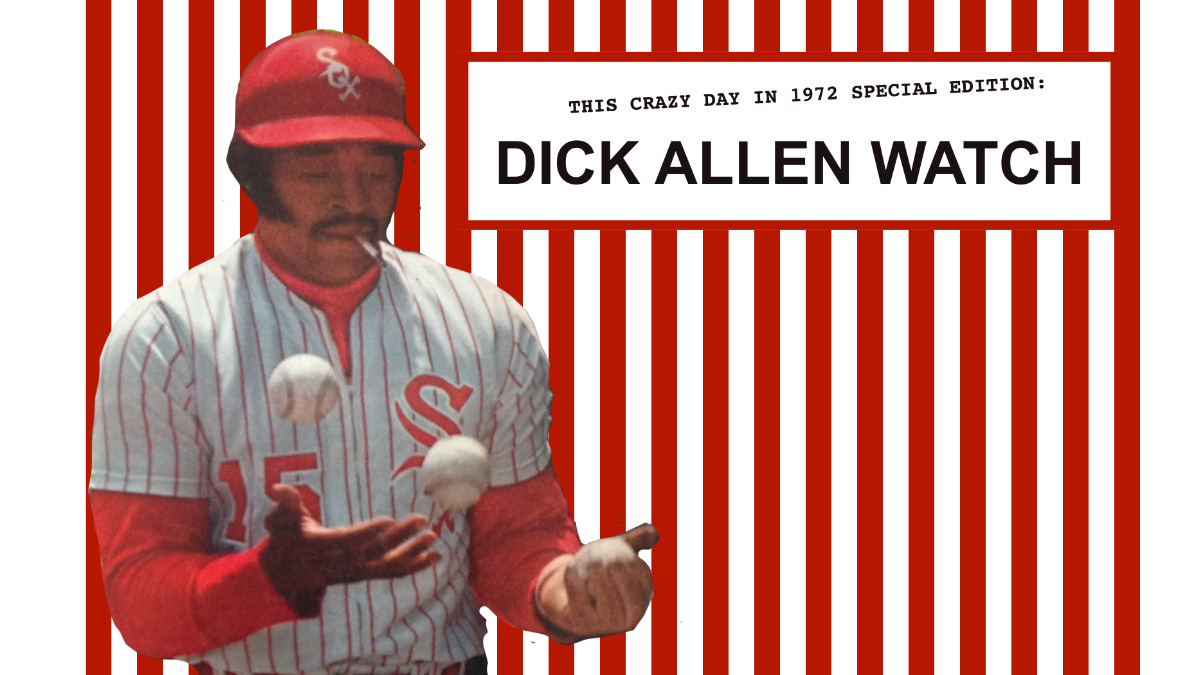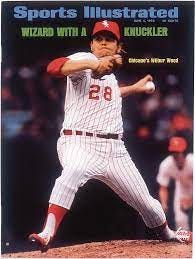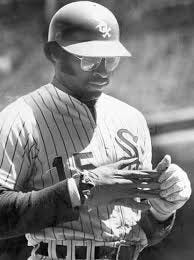THIS CRAZY DAY IN 1972: And the Oscar goes to...Bruce Vilanch for best local coverage of the 1972 Academy Awards
Weekly Compilation April 10-16, 1972
To access all contents, click HERE.
Why do we run this separate item peeking into newspapers from 1972? Because 1972 was part of the ancient times when everybody read a paper. Everybody, everybody, everybody. Even kids. So Steve Bertolucci, the 10-year-old hero of the novel serialized at this Substack, read the paper too—sometimes just to have something to do. These are some of the stories he read. If you’d like, keep up with the 1972 papers every day on Twitter, @RoselandChi1972.
April 10, 1972
Chicago Today: Stop revealing skyjack details, FAA pleads
by Ronald G. Berquist
Keep skyjacking details secret, pleads the FAA.
There have been eight skyjackers who used parachutes in the last five months— two of them this past weekend. Both of those guys asked for parachutes and demanded $500,000. The FAA concludes the answer is to just stop covering the details, rather than physically screening all passengers so they can’t bring guns onto planes.
“Dennis S. Feldman, deputy director of public affairs for the FAA, noted that details of skyjackings usually come from airline personnel. ‘We [the FAA] release very little information,’ he said. ‘And we have asked the airlines to do the same, which means not giving information on hijacking techniques or how the law enforcement officials thwarted the hijacker.”
Here’s the kicker, to use gossip column lingo:
“He also said that at present the FAA has no further security measures that might thwart future skyjackers other than those now in effect at airports….
“‘When we do have something new,’ Feldman said, ‘we quite naturally would not say what it is—again denying the skyjacker information.’”
The skyjacker scorecard from the weekend:
One guy was arrested at the airport by federal agents dressed as plane mechanics.
The other one got his $500,000 and jumped out of the hijacked United Air Lines 727 over Provo, but was tracked down and arrested at his home. Richard Floyd McCoy Jr., 29, is a Brigham Young University student, father of two, and a former Army Green Beret who served two tours of duty in Viet Nam.
April 10, 1972
Chicago Today: Cops’ grisly search restores boy’s arm
No byline
Chicago Daily News: Medics, cops join to restore boy’s arm
By Phil Blake and Barry Felcher
Chicago Sun-Times: Arm severed, boy still may save it
by Bob Olmstead
So begins the saga of Harold Drumm.
“Because three Chicago policemen rushed to the scene of an accident and dug thru filthy debris for more than a half hour in a race against time, a 13-year-old boy today has a chance for a normal life,” begins the dramatic Chicago Today story that oddly has no byline.
“Their grisly search, thru a dangerous chemical trash compressor yesterday afternoon, produced the boy’s arm, severed when the compressor unexpectedly started up while the youth played inside the machine.”
“The arm was taken to Central Community Hospital, where a special surgical team restored it to Harold Drumm, 13, of 1739 W. 43 St., in a four-hour operation” performed by Dr. Wade Malhas and Dr. Fedor F. Banuchi. Harold was listed in satisfactory condition today.
Harold Drumm was playing with a friend behind the Zayre at 41st and Ashland when somehow his arm got cut off by the trash compressor. Most newspaper accounts will skirt around how Harold happened to be inside the machine or how it turned on, severing Harold’s arm four inches below the shoulder.

“After the accident occurred late yesterday [Sunday] afternoon, the boy ran three blocks home and told his mother: ‘I’ll be all right.’”
Peggy Drumm, 31, called police. Per the Daily News, “She said Harold walked into the kitchen clutching his empty sleeve and said, “Mommy, don’t cry. I’ll be all right.”
The Daily News says officer John Jarvis arrived first, administered first aid and called for more help. The Sun-Times says officer William Pigott got there first and administered first aid. While more cops took Harold to the hospital, Chicago Today says Jarvis, Pigott and officer James Manganiello raced to Zayre and searched for Harold’s arm.
“We had no idea at all where it was,” Manganiello told Chicago Today. “We were throwing garbage everywhere, when Jarvis found the arm and took it to the hospital in a squad car.” The Sun-Times says the arm was rushed at “70-80-90 mph” to Central Community Hospital for the three-hour operation.
Then, per the Daily News, the officers sped to the Michael Reese blood bank and picked up three pints of blood for possible use in the operation. Incredibly, the operation started within 45 minutes of Harold losing his arm. Dr. Malhas said two hours was the maximum a limb could be severed and still re-attached.
“Police said the trash compressor is a large box-like machine with a blade device inside,” the Daily News explained. “The machine is attached to the rear of the building and fenced in. But police said the gate in the fence was open when they went there to search for the arm.” The Sun-Times says the compressor is about 8 feet square.
Dr. Malhas says Harold’s youth and health are in his favor, but it’s unclear how much function the arm may regain. “It was a ragged cut and all the nerves and muscles were shattered,” he said.
The Daily News adds that Harold is an 8th grader at Seward Elementary, 4600 S. Hermitage.
Zayre, by the way, was a discount store chain somewhat common in the Chicago area at that time. They weren’t all over the place, but everyone knew the name. The Zayre Corp. sold its stores to Ames Department Stores in 1988, and Zayre stores either closed or became Ames stores. I never heard of Ames stores in Chicago, so I’m guessing they closed.
Here, Pete Kastanes of Vanished Chicagoland writes about shopping at the Zayre at 2750 W. Columbus in the South Side’s Ashburn neighborhood. Here’s a typical Zayre store, which for all I know is the one at 41st and Ashland:
Even older readers may have never heard of Central Community Hospital in Englewood, 5701 S. Wood. That’s because it closed in 1990, the 12th small community hospital to close in the city since 1985. There used to be smaller community hospitals all over, like Roseland Community Hospital—which has survived.
The Trib’s Sharman Stein wrote a moving article about Central Community Hospital’s last day. Central had just 131 beds, but when it closed, only about 40 beds were usually filled. Officials said patients followed doctors who left for other hospitals, while “inadequate Medicare and Medicaid reimbursement resulted in a loss of $3 million annually for the last three years.”
Employees were tearful that last day, hugging each other.
''To see this hospital die is a terrible shame,'' said registered nurse Alice Campbell. ''Not only for the staff—the patients who came here knew the staff, and we knew the patients. With many of them, we remembered what had been wrong with them before, and we knew what to do right away. We got to know and love the patients as well. We cared.''
“Big hospitals may have state-of-the-art equipment and wonderful facilities, Campbell said, but they do not have the personal touch.
''‘Sometimes, all that a patient who is dying needs is that extra touch—that little extra.’''
The property is now Southwood Interventions, a substance abuse treatment center with residential and outpatient programs, so at least it’s serving the community in that capacity.
WHY NOT SUBSCRIBE? IT’S FREE!
April 10, 1972
Chicago Today: What drives skyjackers
Dr. Joyce Brothers column
Younger Readers, never heard of Dr. Joyce Brothers? She’s a syndicated columnist and psychologist—a respectable Dr. Phil. Dr. Joyce Brothers would never have, say, shown up riding a horse at somebody’s house prior to an intervention for the whole nutty family.
No one ever said “Dr. Brothers.” It was always “Joyce Brothers” or “Dr. Joyce Brothers.”
Today, she considers the psychological differences between skyjackers and men (only men) who extort airlines with bomb threats.
Spoiler alert: The only big difference is that skyjackers often want to be pilots, and bombers don’t.
“The bomber-extortionist is basically more aggressive than the skyjacker,” Dr. Joyce Brothers advises, “and wants money to gain power and build up ego. He may steal to show his hostility toward society and to satisfy his sexual and aggressive impulses. Like the skyjacker, the bomber-extortionist has very little sexual outlet. It is extremely rare that this type of man can form a deep, close relationship with women.”
Skyjackers and bombers are all immature, striking back against authority figures, yada yada yada. Dr. David G. Hubbard “interviewed more than 40 skyjackers” as an FAA consultant and finds some similarities:
“You could hardly describe the typical skyjacker as masculine. His voice is apt to be very soft. If he’s had sexual activity, it was due to the advances of a sexually aggressive female,” he says.
Also, Hubbard reports skyjackers found it unusually difficult to learn how to walk, roller skate or ride a bike.
April 11, 1972
Chaplin right
For the last few weeks I’ve skipped using the frequent articles in all papers about the second coming of Charlie Chaplin. Why did Chaplin need a second coming? He got kicked out of the U.S. in 1952, sort of. Why?
It didn’t help that Chaplin married a 16-year-old pregnant with his child as his first wife, and another 16-year-old pregnant with his child as his second wife. When spouse #2 Lita Gray filed for divorce in 1926 charging him with quite a lot including “perverted sexual desires,” Chaplin faced a P.R. disaster including howls to ban his films. Chaplin got past the divorce with the help of a gigantic divorce settlement. When you think about it, he hung on quite a long time considering how scandalous this was at the time.
Chaplin’s third marriage to an adult Paulette Goddard didn’t produce a scandal, but Chaplin grew increasingly political in the course of the 1930s and 40s, which is pretty clear since he plays a mocking version of Hitler in 1940’s “The Great Dictator.” Of course, it never hurt anyone outside the Third Reich to be against Hitler. But Chaplin subsequently looked mighty friendly with Communism, a cardinal American sin as the U.S. entered the Cold War.
Plus, Chaplin managed yet another scandal involving a young woman—Joan Barry, who brought a paternity suit against him. J. Edgar Hoover, just itching for a reason to smear Chaplin, threw four FBI indictments at Chaplin over Barry, including one that stuck: allegedly violating the infamous Mann Act, which made it a federal crime to bring women across state lines for sexual purposes. Chaplin actually stood trial for that one in a gigantic scandal only slight less awful than Fatty Arbuckle, since nobody died. Look up Fatty Arbuckle if necessary, please.
Chaplin was acquitted, but then at 54 he married married 18-year-old Oona O’Neill. Legal, but, still. When Chaplin left in 1952 for the London premiere of “Limelight,” the U.S. Attorney General himself quickly announced that the star wouldn’t be allowed back in the country without an interview about his politics and morality. By that time, Chaplin was as wildly unpopular in America as he had previously been loved (before and in between scandals).
Now, in 1972, Chaplin is back in America for the first time in 20 years, to receive an Honorary Oscar at the Academy Awards on April 10. Movie theaters are showing Chaplin movies, and of course they’re playing on TV as well. It’s Chaplin, Chaplin, Chaplin when it isn’t The Godfather, The Godfather, The Godfather.
And so Charlie Chaplin, creator and star of silent Hollywood’s greatest films including “Modern Times” and “City Lights,” is suddenly topical enough to draw a letter to the editor of Chicago Today:
April 11, 1972
Chicago Today: Charlie tops Oscars—barely
Bruce Vilanch’s TV Report
Doesn’t it figure that TV critic Bruce Vilanch would provide the best coverage of the biggest movie awards? It’s especially fun to read as we now know he will go on to famously write gags for future Academy Awards shows.
“NBC unveiled last night its first special of the summer rerun season,” Bruce writes. “The Charlie Chaplin Show, which premiered at 9 o’clock and seemed to go on thru the dawn, was an interesting compilation of some of the movie master’s greatest scenes….But there was much too much padding in the show. For some reason, a parade of pale and wan Hollywood personalities kept sweeping down a metallic staircase, to repeat drivel to each other, rip open envelopes and hand out trophies. Every so often, Charlie’s name would come up, so you’d know who was the star of the show, but it was a long haul until the great comic actually showed up.”
“When he did, pandemonium let loose. There was cheering and screaming and stomping and yelling. Just like those Judy Garland records.”
Note: Charlie Chaplin received a record-setting 12-minute standing ovation, which live viewers like Bruce would have seen in its entirety. Can you imagine that? Twelve minutes. I wish the YouTube clips showed the whole ovation, because the current clips include only a few pans of the audience. I only recognized one person, Lloyd Bridges—and possibly Donald Sutherland off in a corner of the screen.
Bruce pronounces Charlie’s speech “nice” and “tepid.” “But compared to what went on before, it was the soul of entertainment.”
I have to disagree. I think Chaplin’s speech is well worth watching, so I’ve embedded it below. Chaplin’s introduction by someone presumably well-known but not to me is insufferably long. Skip ahead to when Chaplin comes out at the 2:54 mark. It’s truly touching to see how overcome he is at the overwhelming reception and constant shouts of “Bravo!”
Chaplin’s speech is as heartwarming as it is short—another Oscar miracle! Remember that he’s 83 years old in 1972, so the whole thing may have been a bit much for him.
“Oh thank you so much,” he tells the audience, and he makes those rote words mean so much more, even though he’s most famous for silent films. “Such an emotional moment for me, and words seem so futile, so feeble, I can only say that, thank you for the honor of inviting me here, and oh you’re wonderful, sweet people. Thank you.”
Otherwise, Bruce pronounces the 1972 Oscars “the dullest, ugliest, most boring Oscar show in recent memory. Not one of the major superstars of today’s movies showed up. McQueen, Eastwood, Streisand, Wayne, Newman, McGraw, O’Neal, Mastroianni, Connery, Hoffman—where were they?”
“We were all sitting there waiting for the fun to start. Maybe Bob Hope would show up and bomb like last year….But no….Later on, a huge mob of dancers arrived to surround Isaac Hayes as he performed his ‘Shaft’ music while riding a bejeweled golf cart thru some sort of steam bath that might have been cut from the torture scenes of ‘Clockwork Orange.’”
“For humor, there was Alan King, making Godfather jokes that were old before the picture released.”
“And John Gavin, hoisting Ann-Margret off the ground and thanking the Academy for this fine trophy.”
“The women all looked fabulous,” Bruce observes. “Plunging necklines and long, curly hair were definitely infra-chic this year, as were blue-tinted sunglasses. Sammy Davis has such thick ones that I kept waiting for midnight so he could unmask.”
“The speech of the evening was Cloris Leachman, who got to thank her dance teacher and her father, both of Des Moines, who put her in show biz…..And then it was Charlie’s turn. I hope he gets renewed.”
Here’s Cloris Leachman’s speech—worth watching to see Gene Hackman looking like he wants to slug Raquel Welch during the introduction. “I’m having an amazing life, and it isn’t over yet,” Leachman gushes. Besides her dance teacher and father, she also thanks her first piano teacher and her mother, “whose imagination and funny sense of humor and almost Walter Mitty life herself led to this.”
You didn’t subscribe with that first button? Aw, go on. It’s free, and you won’t read Bruce Vilanch anywhere else these days. If you are Bruce Vilanch, so much the better.
April 11, 1972
Chicago Daily News
April 11, 1972
Chicago Daily Defender editorial: 3 cheers for Austin
“It’s gratifying to witness the sturdiness of moral conviction and judicial insight as exhibited by federal Judge Richard B. Austin in the lingering housing controversy. After three days of hearing arguments…(regarding) the dispersal of the 1,500 housing units scheduled for construction, Judge Austin, steadfast in his conviction, once more ordered the Chicago Housing Authority to build public housing in white areas without awaiting approval by a recalcitrant City Council.
…. “The black aldermen who are pressing for housing units to be built in black neighborhoods under the plea of a desperate shortage, are in truth more concerned with preserving their political prestige and power than they are with the more intrinsic and fundamental prerogatives of their constituents to live wherever they choose.
…. “Their plea amounts to an advocacy of segregation in an area where more thoughtful black leaders are trying to dismantle the greatest barrier to integration and cultural opportunity.
“….Judge Austin deserves to be applauded for not adhering to the pleas of some misguided Negro Aldermen.”
April 11, 1972
Chicago Today: Harold’s age his ally—doctor
by Michael Hirsley
Doctors agree that 13-year-old Harold Drumm has his youth going for him as a factor in regaining use of his severed and re-attached arm.
“Dr. William H. Harris of Boston, who 10 years ago performed the historic first operation to restore a severed limb, said, ‘The age of the Chicago boy is distinctly in his favor. Nerve recovery in a child is much better than in an adult.’”
Dr. Harris re-attached a severed arm on a 12-year-old boy in 1962, who can now grasp with his fingers actually works as an auto mechanic.
“Today—as the [Harold] remains good spirits, eats well and watches television—his doctors must wait for assurance that the limb has survived before the crucial operation to repair nerves,” writes Hirsley. That’ll be about six weeks, they say.
Yesterday, Chicago Today reported that Harold’s lead surgeon, Dr. Wade Malhas, said it was unclear whether Harold’s arm would be functional, because it “was a ragged cut and all the nerves and muscles were shattered”. But today, Chicago Today reports that Malhas said the tissues around the wound hadn’t been badly damaged.
We always have to remember that newspapers are essentially a bigger version of your neighbor telling you what happened when you weren’t around. Even when they want to, they don’t always get things right—and it’s not even necessarily their fault. In this case, Dr. Malhas may well have completely changed his messaging in the past 24 hours. Since no one would ever hunt up an old newspaper to look it up and dispute this point, Chicago Today might not bother noting that Dr. Malhas contradicted himself. Back then, too, even more than now, people often acted like doctors were some sort of demi-gods.
The money quote literally and from a 2022 standpoint: “Harold’s operation could cost up to $1,000 [$6,750 in 2022] and medical expenses are about $100 [$675] a day. Mrs. Drumm, a divorcee, said she hasn’t been working long enough to qualify for health insurance.”
Some things change insanely, some things insanely stay the same.
April 11, 1972
Chicago Daily News: Boy’s spirit sparks fight to save arm
Chicago Tribune: Brave Boy Amazes Doctors Who Try to Save His Arm
by Ronald Yates
To Chicago Today, we can add from the Daily News that “Mrs. Peggy Drumm spent most of Monday night in a sleepless vigil outside her son’s hospital room.”
According to the Daily News, “Mrs. Drumm started work as a box maker last January at the Atlantic Container Corp., 25th St. and S. Blue Island Av., and has not been working long enough qualify for health insurance, according to company officials.” Others will report that Mrs. Drumm is a bookkeeper. Did somebody hear it wrong? Maybe she’s a bookkeeper in a box-making factory.
The Tribune somehow completely missed the Harold Drumm story for its Monday morning edition, even though the Sun-Times got it. But what the Tribune lacked in speed, it makes up for by actually explaining how Harold lost his arm, while discreetly not blaming anyone.
The Tribune says Harold was playing “near” the trash compressor with “several other boys": “The start and stop buttons for the compressor were not covered by a safety device and anyone could have set the machine in motion, police said.”
The Tribune also adds an odd bit with no additional explanation: “Mrs. Drumm said yesterday the steel gate leading to the compressor was often ajar… ‘quite a temptation for any curious little boy.’” That “…” was the Trib’s, not mine.
“Harold’s mother said she began screaming hysterically when the boy walked into the house and told her, ‘Mom, I cut my arm off, but I’ll be okay,’” writes the Trib. The Trib also reports that Mrs. Drumm is a boxmaker.
Don’t miss the latest chapter! In which Steve’s Nonna, a Gately’s doughnut and a Roseland All-Stars Little League hat combine to teach young Steve the heartbreaking truth—that you can’t have everything.
April 11, 1972
Chicago Today editorial: Censorship for hijacking
“The Federal Aviation Administration has asked the airlines to keep skyjacking details secret. The agency reasons that if details of an incident are published, it helps other learn the trade.
“This conclusion is typical of the way the FAA and the airlines themselves have [approached] the problem since it began, trying all sorts of oblique approaches that have failed.”
This, says the Chicago Today editorial, is the FAA’s “worst proposal to date. Censorship never solved anything, and it certainly can’t work in the case of a pirated airliner with a hundred or more people on board. Yet the FAA is seriously advancing the incredible notion that if crime can just be kept secret, nobody will know how to commit one.”
…. “The idea, as we’ve been saying for years, is to keep hijackers from boarding airplanes to begin with….The one in Denver on Friday got aboard with a gun, hand grenades and plastic explosives. Why?”
“The FAA…should order, and enforce, electronic or physical screening of passengers nationwide. That is not only the most effective way to stop hijackings. It’s the only way.”
It’s about time somebody said it. Chicago Today deserves a hand for that one.
April 11, 1972
Chicago Daily News: School Bd. is Boss: Royko book banned
Special to The Daily News (which means a wire story)
The headline seems over-the-top, given the quotes from a key school board member in this story. But the Daily News editorial on April 15-16 includes exactly the over-the-top quotes that would go with this headline, so—I don’t know.
The Ridgefield, Connecticut School Board voted 3-2 to “ban” Mike Royko’s currently best-selling biography of Mayor Daley, “Boss” from the high school reading list next year, according to this article.
Last week, the board had a tie vote over whether to include “Boss” on a supplemental reading list for an elective class.
“Mrs. Lodi Kysor, the school board president, broke the tie and voted against the book Monday night after reading it over the weekend.
“‘I am not censoring books,’ said Mrs. Kysor Tuesday. ‘I am just doing my job to review books when we are trying to improve the curriculum. I think it was a very good book. I think we just could have a better book to put in the school as a public education.’”
Mrs. Kysor said she hoped the reporter would “point out the idea is not to ban the book ‘Boss.’ The idea is just to make an improvement in the curriculum.’”
“Meanwhile, there was a run on stores that might stock ‘Boss’ in this semi-rural town of 18,000, which is 60 miles northeast of New York City.”
The School Superintendent supported including “Boss.”
And, of course, the quote from Mike Royko you were waiting for:
“I have ordered the removal of ‘A Connecticut Yankee in King Arthur’s Court’ from my children’s reading list. Take that, Lodi!”
April 11, 1972
Chicago Daily Defender: My Bag
Hanrahan’s bark has the press responding
by Warner Saunders
Veteran Chicago news anchorman (Ch. 2 and then Ch. 5) Warner Saunders was still in the early years of his TV career when he wrote this opinion column about indicted incumbent Cook County State’s Attorney Ed Hanrahan, accused of conspiring to obstruct the investigation of his office’s pre-dawn police raid in 1969 that killed Black Panthers Fred Hampton and Mark Clark.
Recall that Mayor Daley dumped Hanrahan from the official Democratic slate for the March primary, but he won anyway in a three-way race against Daley’s replacement candidate, Judge Raymond Berg, and independent Democrat Donald Page Moore.
Saunders writes that Hanrahan’s sweep was impressive. “When you start to think about it, Hanrahan really campaigned well and offered tasty little political morsels to the people that apparently could not be turned down….Here are a few things I believe he did very well:
“He created a climate of hostility toward the press. And with Agnew-like efficiency he nurtured that antagonism to such a degree that whenever he would announce a press conference the press would fall all over themselves to get on tape and in print the barbs he directed towards them. Thus he captured untold hours offer television and radio time, plus newspapers space. I suppose the hypothesis here is to get the press mad with you and make yourself seem to be the victim of their outrage.”
NOTE: Good point! And here’s a classic example—Sun-Times columnist Tom Fitzpatrick’s description of a classic Hanrahan press conference, see March 20.
Second, Saunders cites Hanrahan’s law and order campaign focus. Saunders writes that “law and order” means “keep the [racial slur] in check,” so Hanrahan “could use it as a code word when speaking to his buddies in most white communities.” BTW, the Defender prints that slur in full. The paper doesn’t use it a lot, but if someone says it, or uses it in an opinion piece, they don’t avoid it. In 2022, the change to printing a euphemism like “racial slur” is still relatively new.
…. “Thirdly, he was running against a minus zero in the person of Judge Raymond Berg….Some really paranoid black thinkers even believe Berg was nothing more than a smoke screen for Daley to pull Hanrahan in by the back door using the tired political statement about ‘da public has spoken.’”
“Fourthly, Donald Page Moore, the third candidate in this tragic triangle, was so antiseptic and promised so much law and order until it even frightened those persons who wanted traffic tickets fixed….
“Since Donald Page Moore threatened to arrest City Hall, the Federal Building and even the Picasso statue, who could vote for him?”
SPEAKING OF WHICH—Please go read the account of the crazy 1972 primary race for the State’s Attorney Democratic nomination, won by indicted State’s Attorney Ed Hanrahan even though Mayor Daley dumped him from the Machine ticket. The Weekend Edition in that post features commentary from legendary Chicago political campaign manager Don Rose. Don ran independent Democrat Donald Page Moore’s primary campaign against Hanrahan, and gave me a scoop on the billboard prank below. I had to buy that picture from Getty Images, so let’s get my money’s worth out of it.
April 12, 1972
Chicago Today editorial: The amazing Harold Drumm
“Doctors at Central Community Hospital are astounded at the courage displayed by Harold Drumm, 13, whose right arm was severed in a trash compressor last weekend. After the accident, Harold ran 3 blocks to his home at 1739 W. 43d Place to tell his mother not to worry, that he would be all right….
“The family will need all the courage it can get. Harold’s mother, Mrs. Peggy Drumm, is a divorcee and hasn’t been working long enough to qualify for group health insurance….
“That kind of luck would drive many people, probably most of us, to despair. For Harold, it was a reason to reassure everyone that he’d be O.K. We hope he is. He has our deep admiration and our best wishes for a fast, happy recovery.
April 12, 1972
Chicago Daily News: WMAQ ad for the latest Howard Miller show
He’s baaaaaack. Check out the slogan at the bottom— “WE’RE BRINGING BACK THOSE HOWARD-POWERED MORNINGS”
Don’t know or remember who Howard Miller is? See “Mike Royko 50 Years Ago Today: Oh my God, it’s time to talk about Howard Miller,” first item.
April 12, 1972
Chicago Daily Defender: Full page Sears employment ad
Oh Sears.
Once World’s Largest Store, now World’s Squarest Store. It’s just funny to see Sears trying to be hip, but I guess you have to hand it to them, taking the initiative to advertise specifically in the Defender for Black management trainees.
FYR: Maybe you didn’t know Sears called itself the World’s Largest Store, which is why the originally Sears-owned radio station goes by the call letters WLS.
April 13, 1972: The Mighty IC
Chicago Tribune
no byline
Citizens for a Better Environment charges that Illinois Central president Alan Boyd is guilty of a conflict of interest as he heads Chicago’s Mass Transit Board, “which is responsible for building a subway to McCormick Place.”
Leave aside that the Mass Transit Board never got that done.
Mayor Daley appointed Boyd to the board in 1970. “The citizens group has charged the proposed subway will serve two lakefront developments planned on I.C. property. The developments are McCormick City, a real estate complex planned for I.C. air rights at McCormick Place, and the 83-acre Illinois Center Plaza just south of the Chicago River.”
As we’ve detailed elsewhere, the two IC properties are:
and:
“‘As chairman of the Mass Transit District and president of the I.C., Boyd is in a position not only to block off our lakefront but to use our tax money to do it,’ Duane Lindstrom, group spokesman, said yesterday. Lindstrom said without the new subway the developments planned on I.C. property would wither. ‘Boyd should resign his position,’ he said.”
April 13, 1972
Chicago Today editorial: Saving a rich heritage
“Chicagoans appear to have won a rare victory. The Public Library, a cultural heritage older than the century, is safe--or at least as safe as anything can be in this world of whirlwind change.”
Library Board chairman Ralph Newman announced the news on April 11--the old library is saved, plus a new modern library will be built in the Loop. Good thing nobody knew how long that was going to take.
The previous plan to scrap the main Chicago library at Randolph and Michigan--now known as the Chicago Cultural Center--“was opposed by many (including this newspaper) as a needless rejection of the past. It would have represented a complete disregard for history and for the architectural excellence embodied in the building.”
The bad news, Chicago Today adds, is that new library will cost $40 million, financed by general obligation bonds. “We think, tho, that it will be money well spent.”
For the background on how the library was saved from the jaws of demolition death by Mrs. Daley, see the February 11 item here. Come for Mayor Daley and the library, stay for the hilarious women’s lib talk about Mrs. Daley.
April 13, 1972
Chicago Daily News: Allen in top shape on Chicago arrival
By Dave Nightingale
Smiling Dick Allen is splashed across the front page today and here’s the money quote: “I’m planning to stay a while.”
Dave Nightingale met Dick Allen at the O’Hare baggage area, apparently, because we get a complete list of everything Dick Allen brought with him to Chicago, details I love:
“2 suitcases, 2 equipment bags, a flight bag containing 12 suits, a box of bats, a briefcase, and a portable stereo unit.”
Also, Dick Allen was briefly upset because the entire Phillies’ management team showed up in the O’Hare baggage area at the exact same time, heading to a nearby motel for the next round of player-management talks to end the baseball strike.
“I can’t stand the sight of those guys,” Allen tells Nightingale, “They ate me up for years…The sight of those guys makes me want to run away and lock myself up.”
Dick Allen has been working out at the White Sox training camp in Sarasota since he signed his $125k contract 12 days ago--with a 15-pound weighted belt on. He arrives at O’Hare with coach Joe Lonnett, who says: “Every day, we’d give him a fresh young pitcher with orders to throw Dick nothing but breaking pitches.
“Then we took a kid and stationed him outside the leftfield fence at the ballpark. I swear to God, Allen hit at least 25 balls over the fence in each of the last two days he was there.”
April 13, 1972
Chicago Today: Boy, 13, needs funds to help him regain use of torn arm
“Harold Drumm, 13, will supply the courage in the fight to save his severed right arm—CHICAGO TODAY readers can help supply the funds.”
Harold is doing well, “but the bills are piling up.” Re-attaching Harold’s arm, severed on Sunday while he played in a trash compressor behind a Zayre store at 41st and Ashland, will cost $1,000 plus $100 per day in the hospital.
“All contributions received by this newspaper postmarked by midnight Sunday will be matched dollar for dollar by W. Clement Stone, insurance executive and philanthropist.”
We last heard from ubiquitous local millionaire W. Clement Stone when Chicago was desperately trying to get those two pandas promised to the U.S. by Chinese premier Chou En-Lai during President Nixon’s historic China trip earlier this year. W. Clement Stone is the leading state Republican, and as such, he was a leading figure in the attempt to procure pandas. When the White House announced the pandas would go to Washington’s National Zoo, Stone said he’d personally ask Nixon to get two more for Chicago.
As we noted during the Panda-monium, you used to hear about W. Clement Stone all the time, because he’s a native Chicagoan who became a real Horatio Alger story. Stone’s father died when he was a child. He started out as a newsboy on the South Side, quit high school to sell insurance, then founded his own insurance company—which eventually became Aon Corporation. You may have noticed the fourth-tallest building in the city on the north end of Grant Park. That building was originally the Standard Oil Building, but now it’s Aon Center.
W. Clement Stone may be matching dollars for the fund, but the drive was started immediately Monday by WGN’s Wally Phillips, king of morning radio.
“Phillips is also collecting money for Harold by auctioning such items as an autographed photo of Charlie Chaplin, which brought $1,500. Bob Hope and other celebrities have contributed mementos to be auctioned.”
Yesterday, Harold told his mom he hopes to play baseball again soon, and reported that he feels some sensation in his arm. This article says Mrs. Drumm is a bookkeeper, rather than a box maker, who supports Harold, his sister Theresa, and herself.
“Meanwhile, a $5 million damage suit in behalf of Harold has been filed in Federal District Court by Atty. Lawrence Walner charging negligence. Defendants are the Auto-Park Co….the machine’s manufacturer, and Zayre Department Stores.”
The lawsuit charges that the machine design was defective and “unreasonably dangerous,” while Zayre didn’t post warnings or provide safety measures.
April 13, 1972
Chicago Today: WGLD-FM ad
I can’t help but notice that Chicago Today carries far more display ads for radio stations than the other papers. Here’s one—anybody remember listening to this station?
April 13, 1972
Chicago Daily News: Daley: I’ll oppose Crosstown if shown it’s ‘detrimental’
by Larry S. Finley
Mayor Daley has two pet projects that are in trouble: an airport in the lake eight miles off 55th Street, and the Crosstown Expressway.
The Crosstown is really heating up. Democratic candidate for governor Dan Walker, who Daley didn’t back who he hates, solidly opposes the Crosstown. Today, reporters ask Daley about that at a press conference.
Classic Mayor Daley strategy ensues. Mayor Daley claims, “I have never taken that strong a position [on the Crosstown] anyway.” He’ll be happy to scrap the giant construction project! Happy! If somebody can prove it’s “detrimental to the people of Chicago” or “unnecessary.”
But hey—the engineers said it IS necessary, Daley notes. And as for people who don’t want to be displaced or see their neighborhoods destroyed? “Nobody ever claimed there shouldn't be an Edens or a Kennedy.”
On Wednesday, over 300 irate Chicagoans met to organize a campaign against the Crosstown leg connecting Midway with the Chicago Skyway. “They booed and jeered as a representative of Sen. Adlai. Stevenson (D-Ill) said he ‘was studying the matter.’ More boos came for a statement from Sen. Charles Percy (R-Ill) saying the Crosstown ideas ‘needs more study.’” Straight out of “Veep.” Or the other way around.
But Dan Walker’s representative said the right thing: “He is against it and will fight with you all the way to oppose it.”
Gov. Richard Ogilvie is currently waffling about the Crosstown.
April 14, 1972
Chicago Today, back cover
April 14, 1972
Chicago Today: DICK ALLEN WATCH!
Tanner defends his part in drills
By John Hillyer
The baseball strike has just ended, but now there’s another controversy over the White Sox players’ workouts during the strike.
American League President Joe Cronin said the players could work out by themselves during the strike. But as reporter Hillyer puts it, “Sox Owner John Allyn violated--and defiantly--the letter of that order ever since the strike began, letting his players use (Comiskey Park) for workouts on their own,” and then letting manager Chuck Tanner join them the last two days.
Chuck Tanner retorts: “The park was open. I had a right to work out, didn’t I?”
Now Kansas City Royals owner Ewing Kauffman is protesting the three games KC plays against the Sox to open the season, starting Saturday (tomorrow) with a double header on Sunday.
“’I didn’t direct our workouts,’ Tanner pleaded, tongue firmly planted in cheek. ‘I just worked out. Hell, I’ve got to get in shape for the season too, don’t I?’” Tanner claims Bill Melton was in charge of the work out.
“But even as just a spectator, Tanner was ecstatic yesterday after watching his new slugger, Dick Allen, put on a Sox uniform and take his first cuts in Comiskey Park. ‘He’d just flown in from Pittsburgh,’ said Tanner, ‘and he’d had only about two hours’ sleep. He said his brother kept him up until about 3:30 a.m. But he hit a few screamin’ meemies into the upper deck.’”
Dick Allen tells Chicago Today’s Hillyer that he’s as ready as anybody else. “‘Nobody’s really in the swing for the first month of the season anyway,’ Allen observed, shrugging off dire reports about the 370-foot left field line in Municipal Stadium here. Allen has been working out with a 15-pound belt around his waist and appears to be in peak physical form.”
April 14, 1972
Chicago Today: Harold has many friends
April 14, 1972
Chicago Today: WAIT ad
April 14, 1972
Chicago Today: WVON ad
April 14, 1972
Chicago Today: Your chance to help Harold
As fund-raising by Chicago Today and Wally Phillips continues to help pay for re-attaching Harold Drumm’s severed arm, Black Hawk stars Bobby Hull and Chico Maki visit him at Central Community Hospital.
Today, the paper reports that Harold’s one ambition is to be a hockey player, although the other day they said he told his mom he wants to play baseball again soon. Harold was “slightly subdued” when Bobby Hull and Chico Maki arrived, “But his face was all smiles when they handed him a hockey stick, autographs of other Black Hawk players, a puck, crest, decals, a yearbook and even two boxes of candy from Dick Butkus.”
Then they talked about hockey for a while. “Before Hull left, he told Harold, ‘Keep your chin up and make sure you eat well—good red meat and liver.’”
WGN’s Wally Phillips has collected over $1,000 so far, the full cost of the original operation.
Wally continues auctioning mementos from famous people to add to the fund. Next up are “Actress Sandy Duncan’s wig; Gregory Peck’s autographed picture and the pen he used to sign it; singer Richard Harris’ autographed neck scarf; Bob Hope’s watch; a personally autographed Burt Bacharach album and Phyllis Diller’s jeweled cigaret holder.
Phyllis Diller keeps coming up a lot more than I ever expected.
April 14, 1972
Chicago Today: WLS ad
If you’re a regular THIS CRAZY DAY reader, you’ll probably want to follow Mike Royko 50 Years Ago Today too.
April 14, 1972
Chicago Daily News: City’s new lake plan draws ‘retreat’ blast
by Jay McMullen
For some reason, the Daily News got its account in today’s paper of the City Council’s Committee on Environmental Control’s hearings on Mayor Daley’s new lakefront plan, but Chicago Today’s account will be tomorrow. One of the great thing about lots newspapers is that we get accounts of the same events from different POVs, with different interesting details.
From the Daily News, reporter Jay McMullen—future husband of future Mayor Jane Byrne—writes that Lewis W. Hill, Commissioner of the city’s Department of Development and Planning, presented a “statement of principles” on preserving Lake Michigan’s shoreline. His presentation will be immediately attacked by Ald. Leon Despres (5th), one of the largest independent Democratic thorns in Mayor Daley’s side.
McMullen reports that Hill’s most important points are that the “lake and shoreline area” can only be used for public purposes, and even then, nothing can be constructed if it will diminish water quality or cause ecological damage.
The issue is going to be what “lake and shoreline area” means.
“Ald. Leon M. Despres (5th), in a statement following Hill’s testimony, charged that the principles ‘are an attack on the lake….Under the new principles, the machine plans to give away or sell off all the lakefront and to limit protection to the few feet of beach described as ‘lake and shoreline area.’”
Despres went on: “The principles reverse the burden of showing environmental damage. They clearly favor lake defacement and scarring unless someone shows clear proof of environmental damage. The burden of proof should be the other way around.”
Hill didn’t define “lake and shoreline area.”
April 15, 1972
Chicago Today: Offshore airport still alive
By Ray McCarthy
Illinois State Rep. Robert Mann (D-Chicago) has been pushing for his “Lake Michigan Bill of Rights,” which has already passed the Illinois House. Today, he appeared at the City Council hearing on Lake Michigan and declared “the time has come to bring a halt to the further degradation of Lake Michigan.”
“Let’s be candid about it—the next 10 years will be crucial to the life of Lake Michigan,” Mann told the aldermen. “Not only is the process of eutrophication or aging accelerating rapidly due to overdoses of pollutants, but also the lake continues to serve as a sink for toxic substances.”
Mayor Daley opposes Mann’s Bill of Rights, which would prohibit building Mayor Daley’s dream project— a $1 billion third airport right smack in the lake, eight miles off 55th Street. You read that right.
Mayor Daley’s commissioner for development and planning, Lewis Hill, said the Daley administration opposes Mann’s bill because it “abrogates and dilutes the ability of the city to continue preserve the lake.”
Instead, “Hill presented an eight-point program which contained sweeping guidelines for conservation of the lake as a natural resource” and would supposedly not allow construction “if such construction or modification would diminish the water quality or cause ecological damage to the lake.”
But before all of that, McCarthy reports, an official from the Citizens Action Program (CAP) asked Commissioner Hill for the city’s so-called “secret plan” for developing the lakefront. By “secret,” the CAP official meant what the city really plans to do with the lakefront.
The chairman of the Council’s Environmental Control Committee, who’s running today’s hearing, ignored the CAP official. That’s Ald. Michael Bilandic (11th), future mayor who will succeed Daley after his death in 1976.
So legendary Council progressive firebrand Ald. Leon Despres (5th) demanded an answer: “This is not a dictatorship. This is a committee. Answer the question about the city’s secret plans.”
No answer was forthcoming. The CAP official left after calling the meeting “a farce.”
Mrs. Joanne Alter, Democratic candidate for Sanitary District trustee, also spoke to urge the Council to back Mann’s Lake Bill of Rights:
“I am opposed to the construction of an airport in the lake…The potential of endangered water supply and visual and noise pollution are the interrelated crises of the 1970s.”
April 15, 1972
Chicago Daily Defender: Coroner defiant in Kenwood death quiz
By Robert McClory
“Dr. Andrew Toman, the Cook County coroner, asserted Thursday that he will run his office ‘as he sees fit,’ after several southside political and community leaders charged that a ‘brazen and contemptible whitewash’ is planned when the official inquest is held Monday into the death of ex-Marine Cornell Fitzpatrick at Kenwood High School.
“Speaking at a news conference at Alliance to End Repression headquarters, 33 E. Van Buren, the leaders, including Rep. Robert Mann (D-24), Marshall Patner, head of the Chicago Law Enforcement Study Group, and attorney James Clement, condemned Toman for appointing the same special deputy coroner to the case who headed the jury which exonerated the police in the 1969 killings of Fred Hampton and Mark Clark.”
Toman had promised to pick the special deputy coroner from a list approved by the Chicago Bar Association, but instead chose Martin Gerber, who was not on the CBA list.
Toman “told the Daily Defender Thursday that he chose Gerber because of the ‘commendable’ way he handled the Hampton-Clark affair. He said it was ‘nobody’s business’ why he had backed off on his original word to the Kenwood area leaders.
“Fitzpatrick was killed Feb. 15 by an off-duty Chicago policeman, who was working as a security guard at Kenwood. He claimed Fitzpatrick pulled a gun on him, but a wide variety of witnesses have testified that Fitzpatrick did not have a weapon.”
Patner’s group completed a study of the coroner’s office recently that found the office needed to change practices drastically. Patner called the coroner’s current system “obsolete and outmoded.”
April 15, 1972
Chicago Today: Readers rush gifts to boy’s hospital fund
Chicago Tribune: Fund Drive Set for Boy Hurt in Trash Machine
“Harold Drumm, 13, whose right arm was severed Sunday in a trash compactor, has won the hearts and sympathy of CHICAGO TODAY readers,” the paper reports today. Readers can still send checks to the Harold Drumm Fund, CHICAGO TODAY, 441 N. Michigan Ave, 60611.
“Every dollar will be matched by another dollar from W. Clement Stone, insurance executive and philanthropist. Contributions should be postmarked by midnight tomorrow.”
“Mrs. Drumm, who earns $100 a week as a bookkeeper to support Harold and his sister, Theresa, said he is in good spirits. Radio personality Wally Phillips of WGN said his fundraising on behalf of Harold has reached almost $2,000.”
Per the Tribune, “The Stock Yards Kiwanis Club yesterday started a fund drive for Harold Drumm….The Drovers National Bank, 47th Street and Ashland Avenue, will act as depository.”
The Drovers National Bank was a gigantic founding institution of Chicago for the nearly 100 years when Chicago was the country’s meatpacking center. In our timeline, the mighty Union Stockyards had shut down less than a year earlier—on July 30, 1971. The Drovers Bank will be declared insolvent in 1978, at that time one of the oldest banks in the country. Its original name was “Drovers National Bank of Union Stockyards of Chicago.”
The Drovers National Bank has taken an interest in Harold because he lives in Back of the Yards, the neighborhood surrounding the old Union Stockyards. We’ll focus more on the Stockyards in “Roseland, Chicago: 1972” in Chapter 10: Jack Cassero, because Steve’s close friend Jack dreamed his entire life of being x r5ca cowboy in the Stockyards.
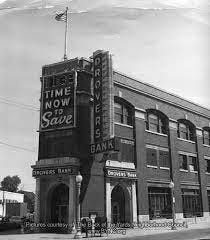
April 15, 1972
Note: Mr. Carsley is referring to, in order, Gene Hackman as Popeye Doyle in “The French Connection,” Best Actor; Jane Fonda, as Bree Daniels in “Klute,” Best Actress; Ben Johnson as Sam the Lion in “The Last Picture Show,” Best Supporting Actor; and Cloris Leachman as Ruth Popper in “The Last Picture Show,” Best Supporting Actress.
April 15-16
Chicago Daily News: Real leaders of black in danger
Lu Palmer column
“For blacks, leadership has been, is, and will be a critical factor in the struggle for liberation. And it must always be examined in light of the fact that ‘leadership’ signifies one thing to the oppressed people being led, but quite something else to the oppressor,” writes Lu Palmer in his regular weekly column.
“The black leader who is created by white power authorities has either visible or invisible ties to those authorities. which dilute his commitment to black people.
“The black leader who pursues an unswerving course almost always springs from the authority of black people only. This is the black leader who most threatens the white power structure and who, invariably, is either assassinated, banished, or otherwise broken.
“Nat Turner, Marcus Garvey, Malcolm X, Fred Hampton, H. Rap Brown, Stokeley Carmichael—these are some of the black leaders designated and recognized by blacks who have suffered the ravages of assassination. or banishment.”
Add to that list the recently deceased former Congressman Adam Clayton Powell Jr. and Paul Robeson, writes Palmer. He sees parallels between their lives.
Powell, elected to Congress from Harlem, “became chairman of the House Education and Labor Committee” and “the most powerful black man in America. And when his audacious power became too much of a threat, Powell was illegally banished from his seat in Congress.”
The U.S. Supreme Court reversed Powell’s expulsion from Congress, and he was re-elected twice more. But “Powell, broken and shorn of his power, went into self-imposed exile on the island of Bimini, and lived out his days in comparative isolation.”
Paul Robeson, internationally acclaimed singer, was outspoken politically and regarding racism. His passport “was revoked when he sought to attend the World Peace Conference in Paris in 1949. Robeson was labeled a Communist and the forces of power in this country turned on him to the point that he could not practice his art and he was forced into seclusion.”
…. “But the Powells and Robesons will live on in the hearts and minds of blacks to whom. they left such liberating and power-directing legacies. Gradually, blacks are beginning to understand how America systematically liquidates black leadership.”
April 15-16, 1972
Chicago Daily News editorial: Royko frightens Ridgefield
“We are glad that the action of the Ridgefield, Connecticut school board in banning Mike Royko’s book did not go unnoticed by the Eastern press. The Danbury (Conn) News Times and the Bridgeport Sunday Post hung out the board members’ brave quotes (‘radical, revolutionary, anti-American’) for all to see, and the New York Times said—unexceptionably from our viewpoint—that the introduction of literary or political criteria (or worse, an effort to prejudge ‘truth’ across 1,000 miles) was ‘a threat both to education and to freedom.’”
“What Mike did in his book…was to tell the story of the last of the big city bosses and his political organization with all its scars and warts—no more, no less….But the town of Ridgefield, like many another American town, is rich, comfortable, and more than a little uptight about social problems. It would be happy if black people, young people, question-raisers, demonstrators and the rest of the troublemakers would go away—or be put away. And by Gad, their children are going to come up believing in these same Eternal Verities if they have anything to say about it.
“So they banned Mike’s book. As one Ridgefield citizen observed, ‘Here again we have a book before us that ridicules the American way of life.’ And another added: ‘I believe it’s all part of a giant conspiracy.’
“That last got to us. If ever there was a loner, a solitary goer and doer on the Chicago scene, it’s Royko.
“But that’s beside the point. The point is that Royko is a revolutionary—an agent of the same dangerous stripe as that other revolutionary who wrote:
“If men are to be precluded from uttering their sentiments on a matter which may involve the most serious and alarming consequences that can invite the consideration of mankind, reason is of no use to us, the freedom of speech may be taken away, and dumb and silent we may be led, like sheep to the slaughter.’
“We do think that Mike turns a more succinct phrase than George.
“Washington, that is.”
April 16, 1972
Chicago Tribune: Boy Clears Major Hurdle in Fight to Restore His Arm
by David Gilbert
Dr. Malhas tells the Tribune that Harold has cleared a major hurdle today, because the first week after re-attachment is most dangerous, due to the possibility of gangrene.
“The orthopedic surgeon said that he continued to marvel at the young boy’s good spirits and inspiring attitude.
“ ‘He’s cheerful, a quite well-adjusted, healthy young man,’ Dr. Malhas said of his patient. Harold…‘is not representative of the so-called new generation of spoiled brats,’ the doctor said.”
Besides this ad hoc observation indicting the rest of Harold’s generation, Dr. Malhas said the first concern had been to save Harold’s life:
“It could have been quite dangerous. The severed arm was found in garbage which was crawling with bugs that could carry gas gangrene…We sterilized both portions of the arm with great amounts. of penicillin and another antibiotic and have now passed the first critical stage successfully.”
April 16, 1972
Chicago Tribune: Allen, Wood on but Sox Off 2-1
by George Langford
The Sox almost had a dream opener in Kansas City. George Langford describes manager Chuck Tanner smiling yearningly about the scenario that almost happened:
“What a great story that would have been. Wilbur Wood pitched a shut out and Dick Allen hit a home run in the ninth inning to win the opener.”
But no. Wilbur Wood pitched “nine superb innings after missing more than two weeks of competition because of the player strike”. He retired the first two Royals in the ninth. The Sox led 1-0, thanks to Dick Allen’s ninth inning homer: “Allen’s first home run in his first game as a member of the Sox and the American League.”
“But Bob Oliver ruined the story at that point for the Chicagoans by slicing a high knuckleball into the right field seats to tie the score.”
Bart Johnson took over for Wood in the 10th. He “seemed about to pitch out of the grim situation” in the 11th, but things went south. The Royals scored, and the formal protest from Royals owner Ewing Kauffman—over Chuck Tanner working out with the team during the strike—no longer mattered.
The loss “left the peripatetic Mr. Allen apparently the most unhappy of all the White Sox over the outcome. Allen was the last player to leave the field, sat in front of his locker with head in hands for several minutes then retired to the whirlpool in the trainer’s room without comment.”
Dick Allen’s home run “bounced on top of the left centerfield fence at the 408-foot sign”.
In the crucial 11th inning, Bart Johnson “called Allen, an eight-year veteran of the National League, in from first base for a consultation on how to pitch to John Maryberry, who spent parts of the last few seasons with Houston in the N.L.”
Did you dig spending time in 1972? If you came to THIS CRAZY DAY IN 1972 from social media, you may not know it’s part of the novel being serialized here, one chapter per month: “Roseland, Chicago: 1972” —FREE. It’s the story of Steve Bertolucci, 10-year-old Roselander in 1972, and what becomes of him. Check it out here.



